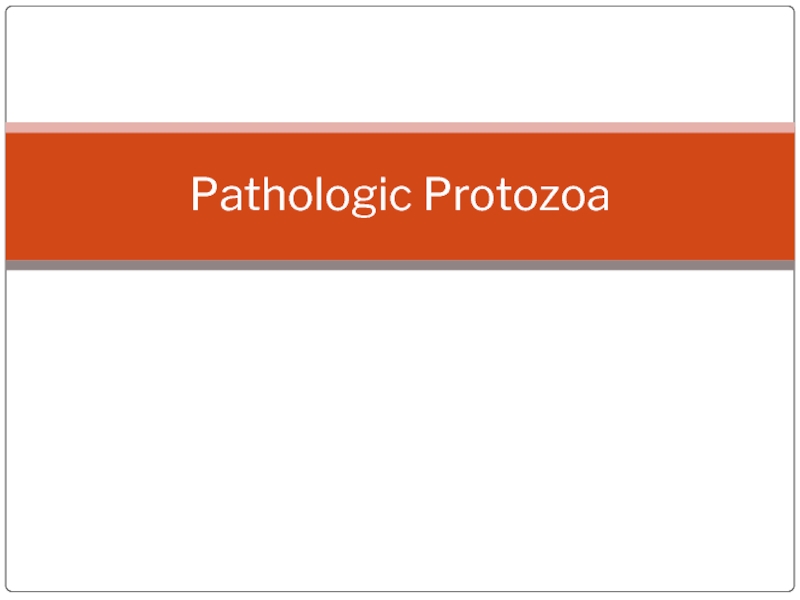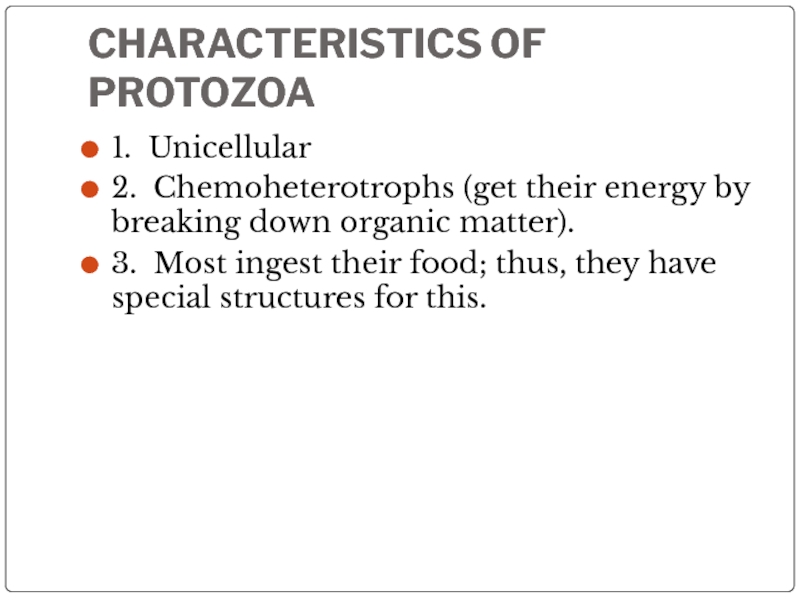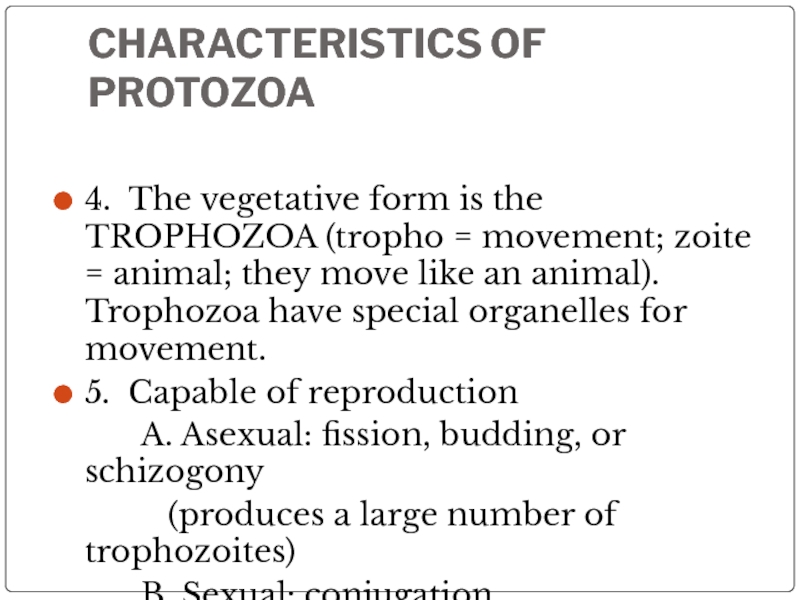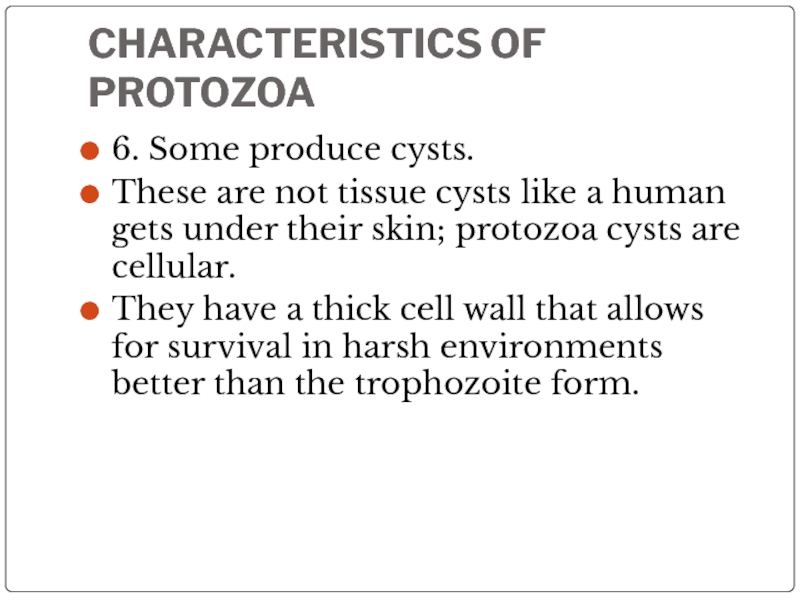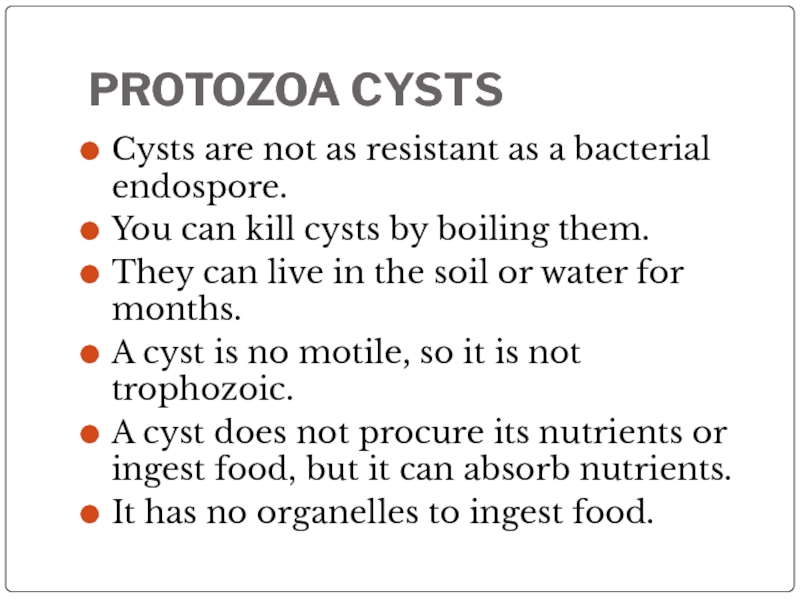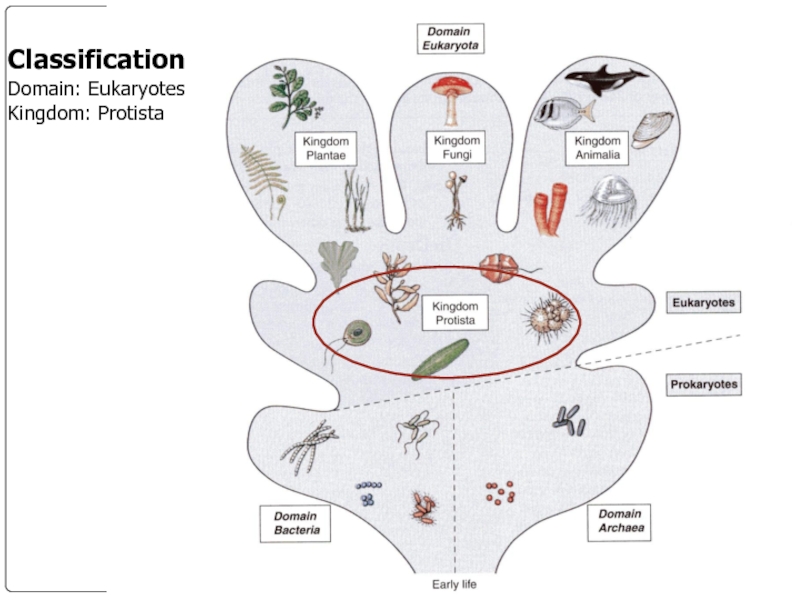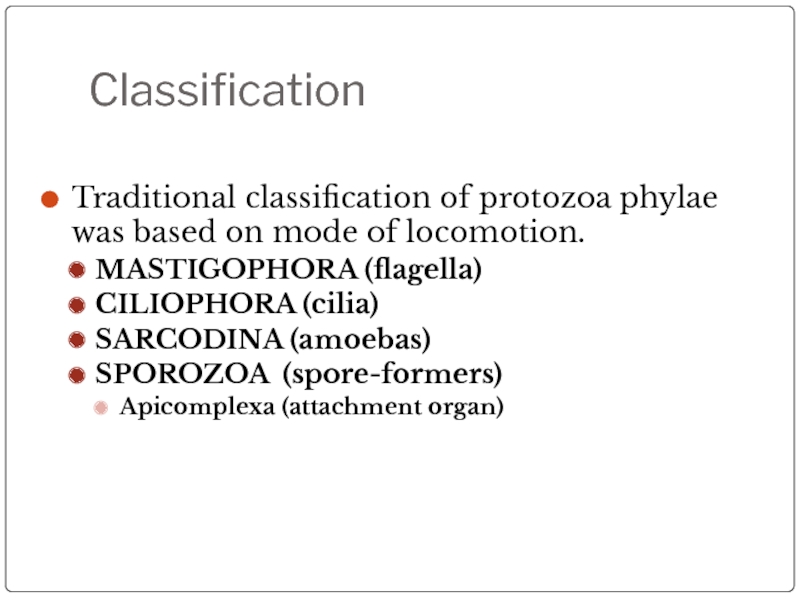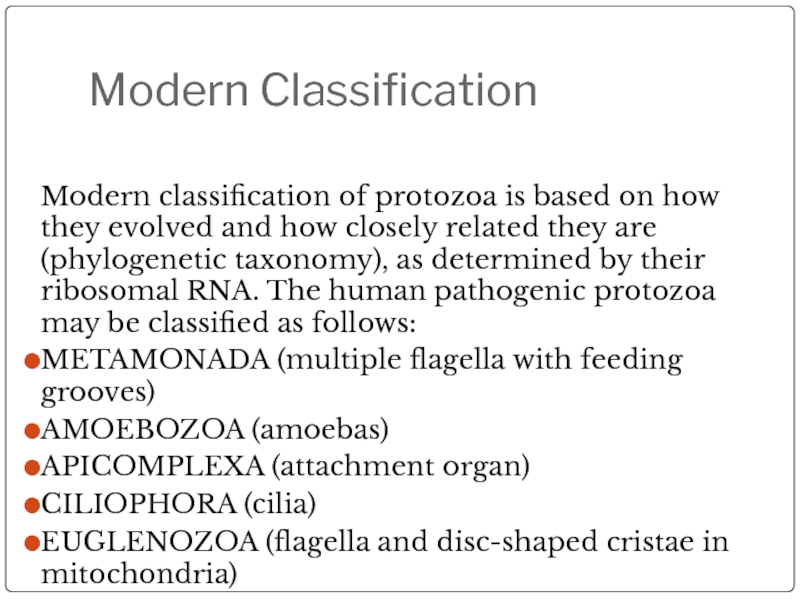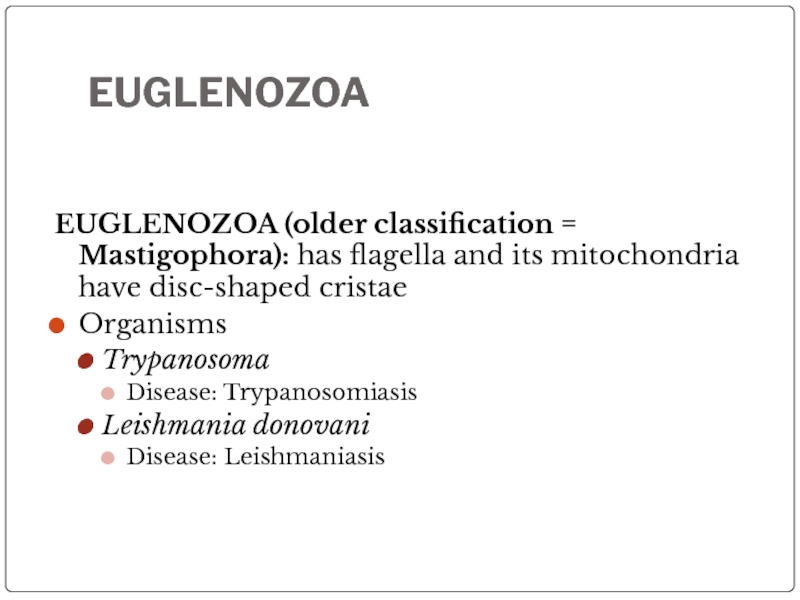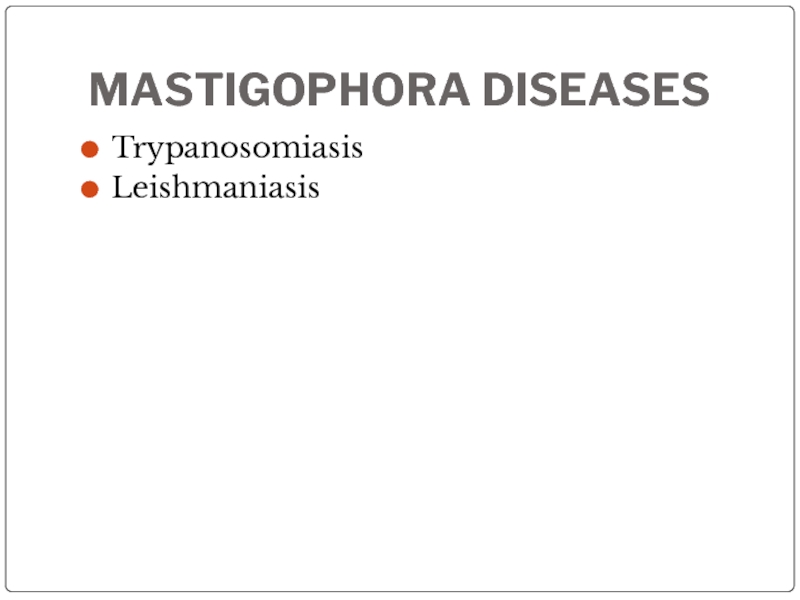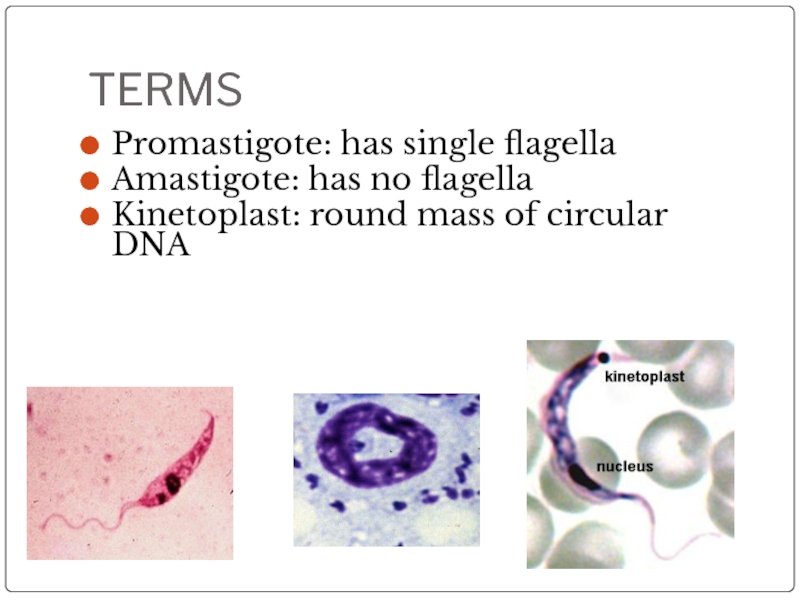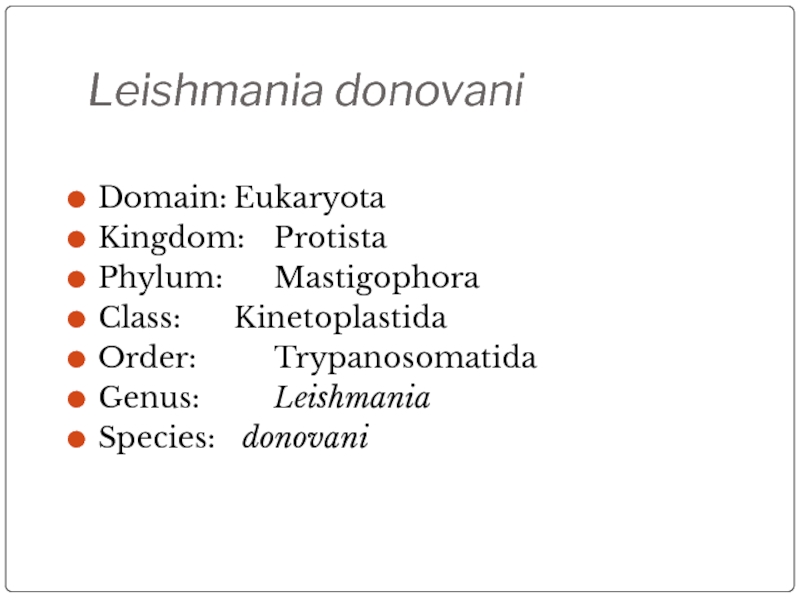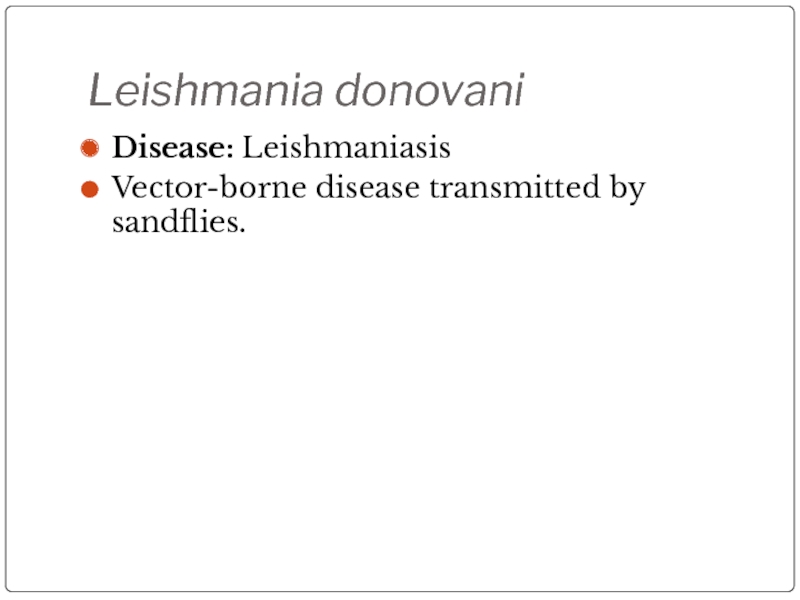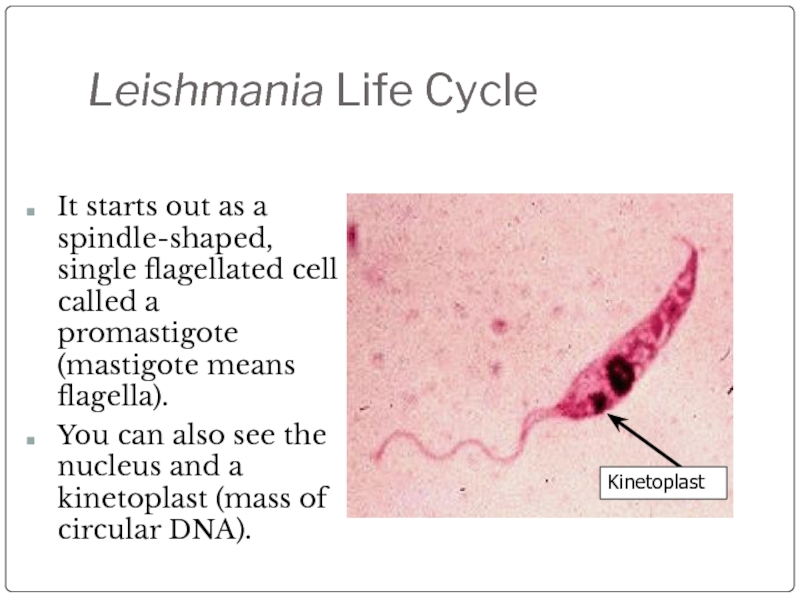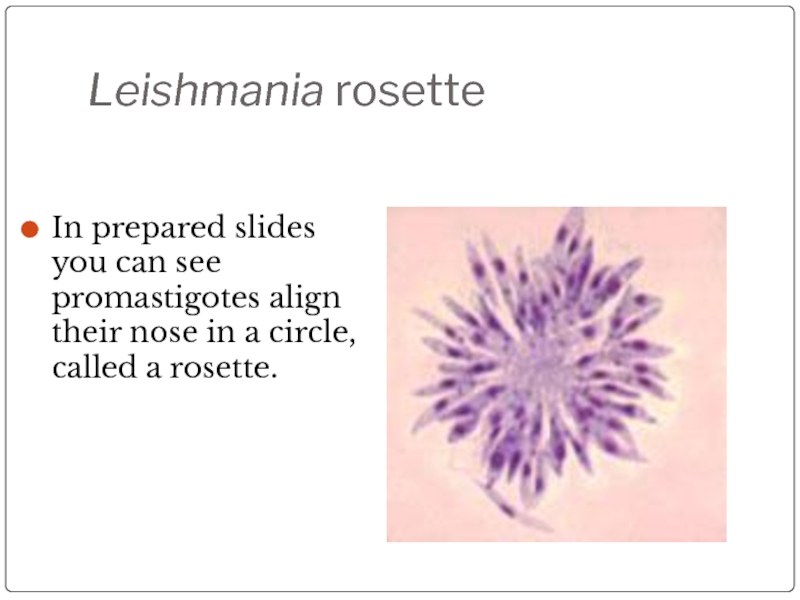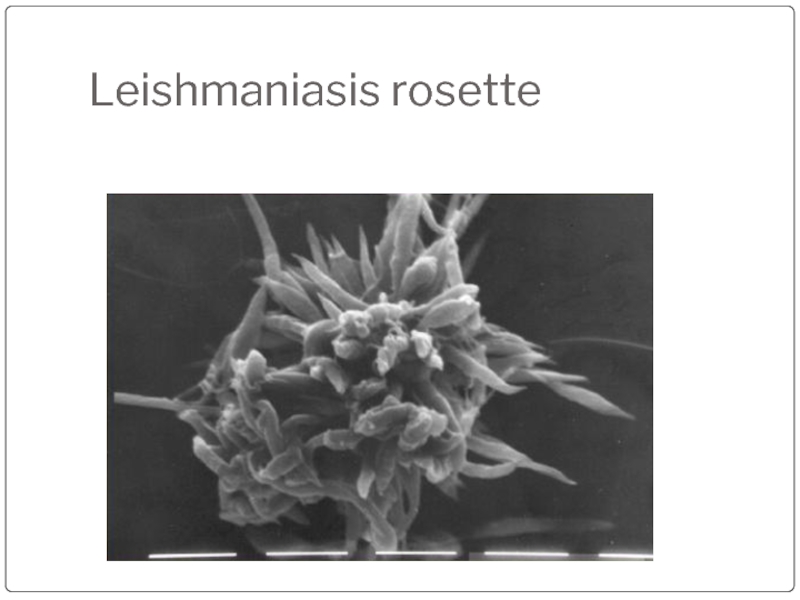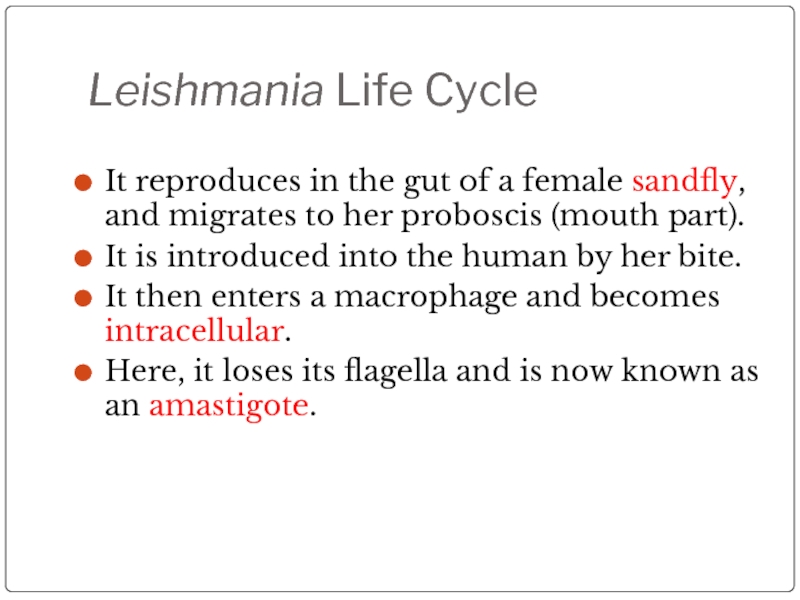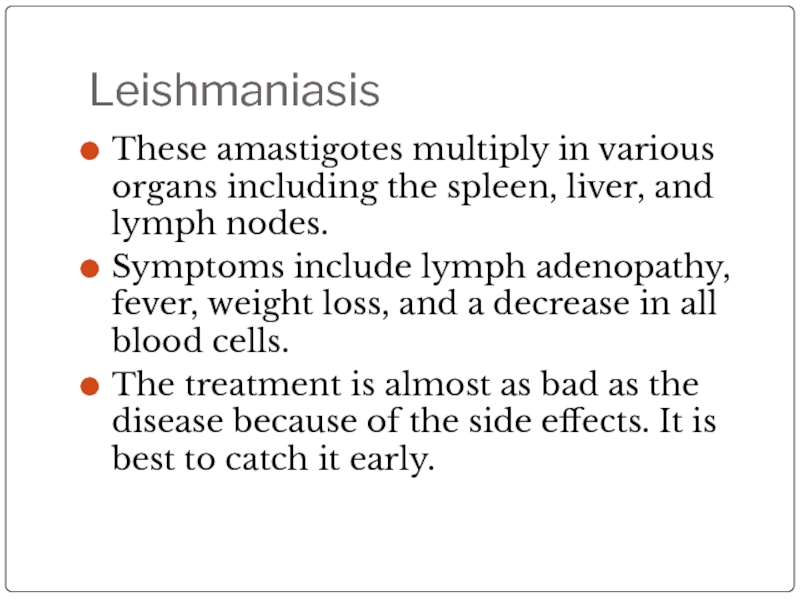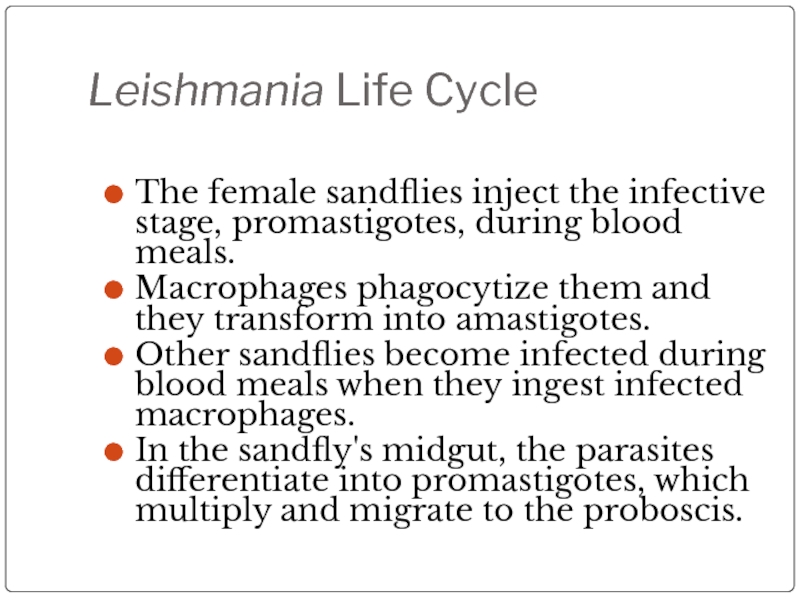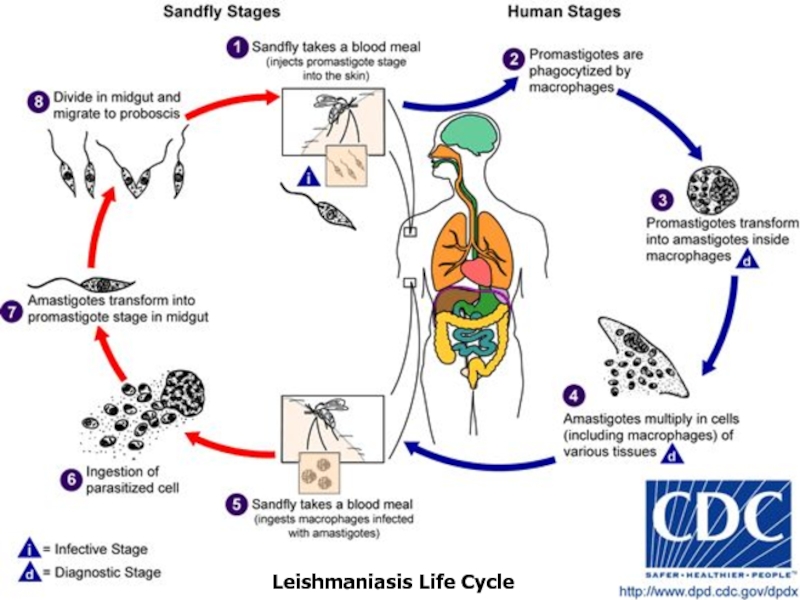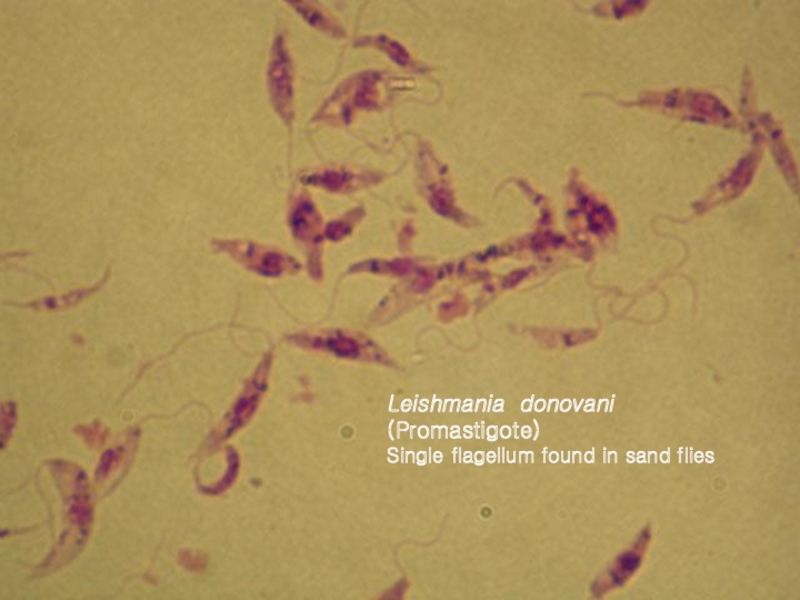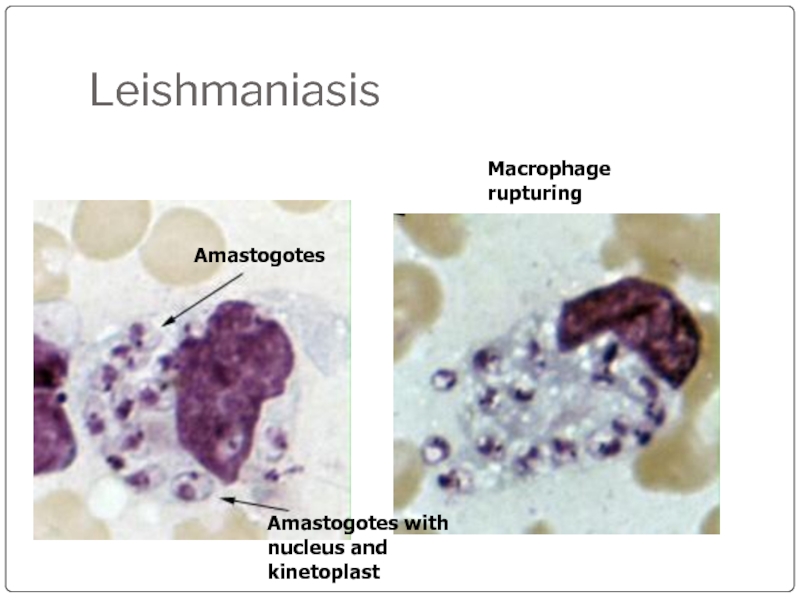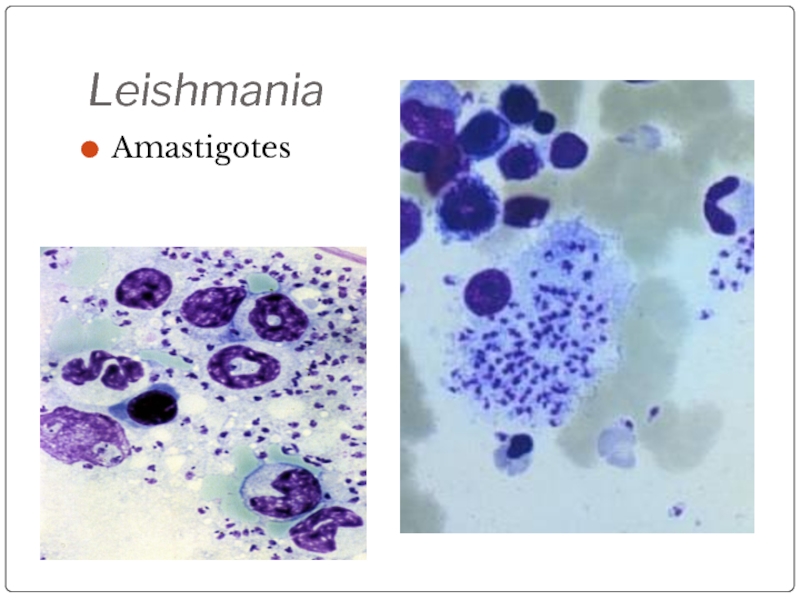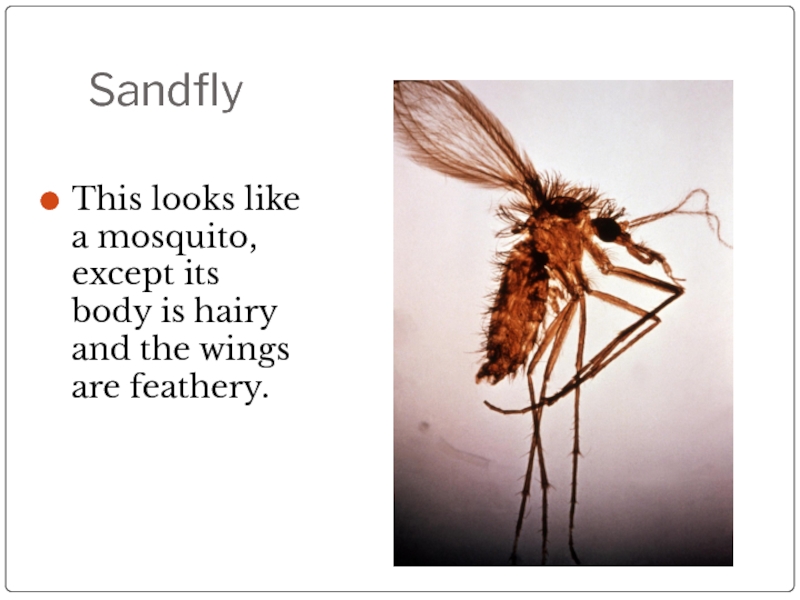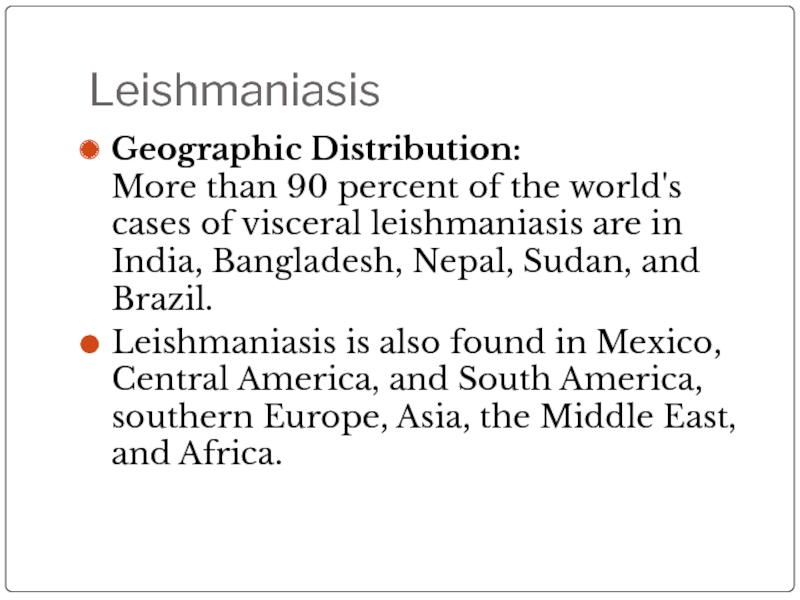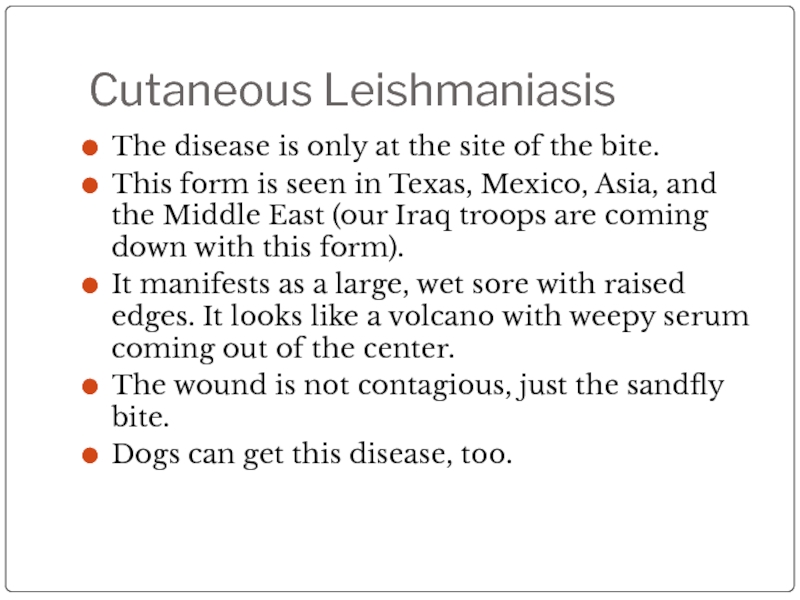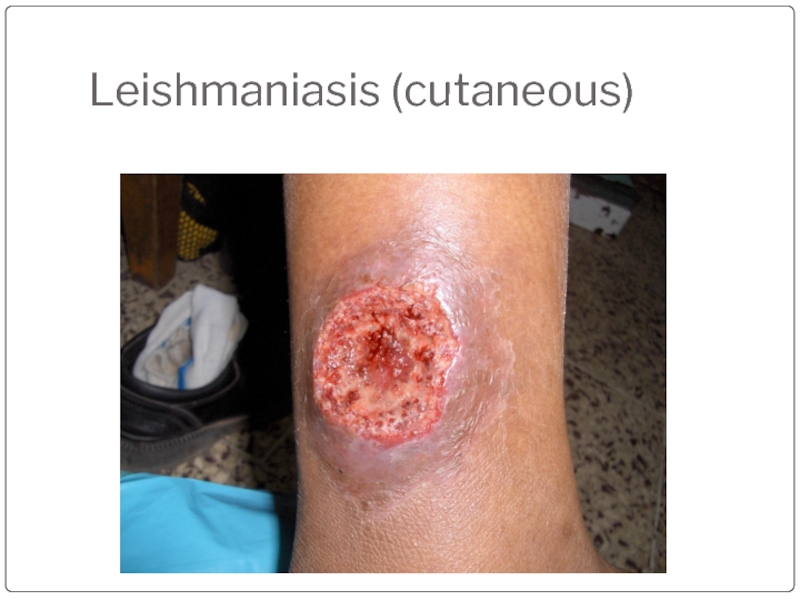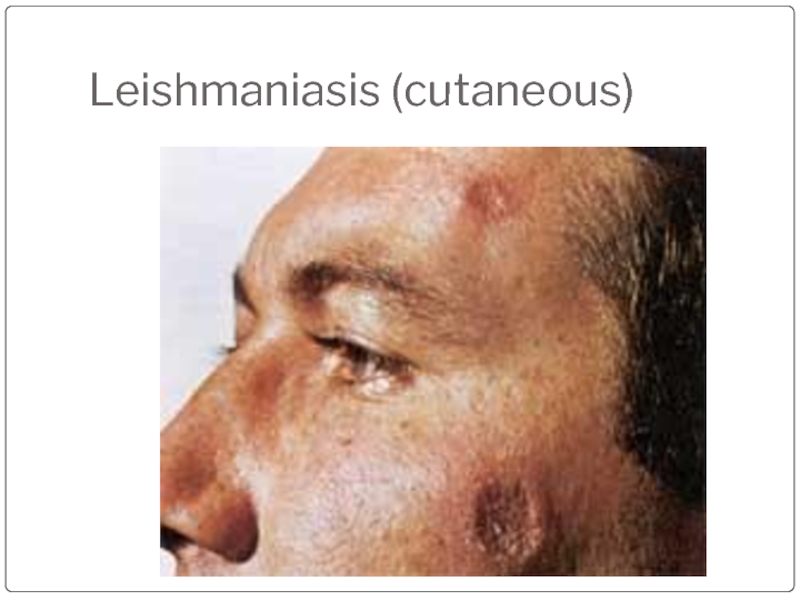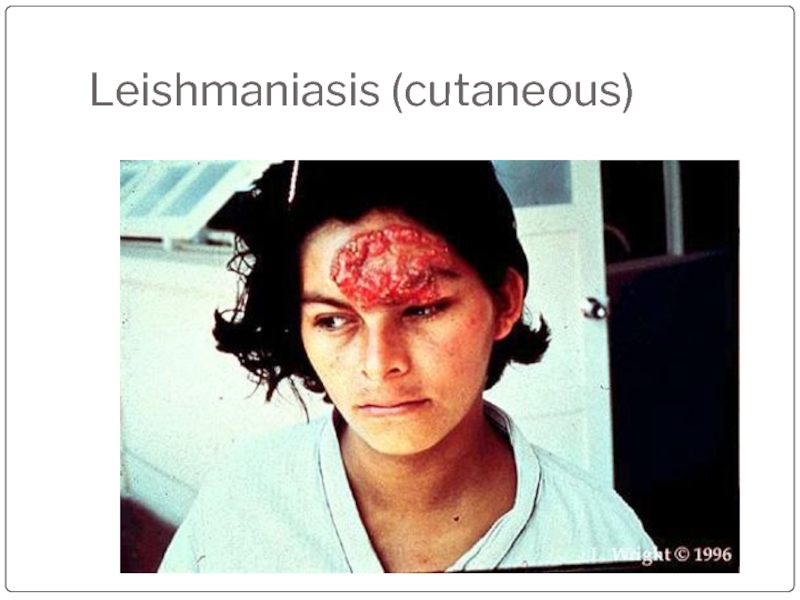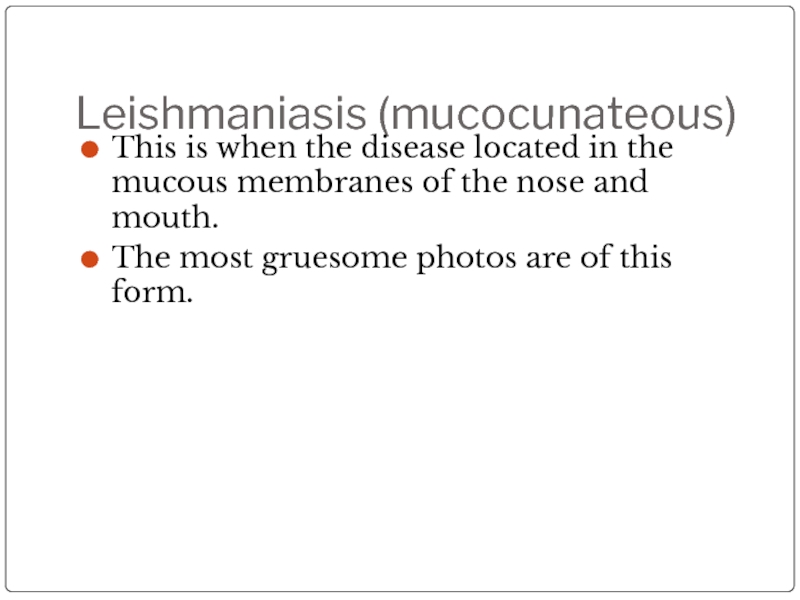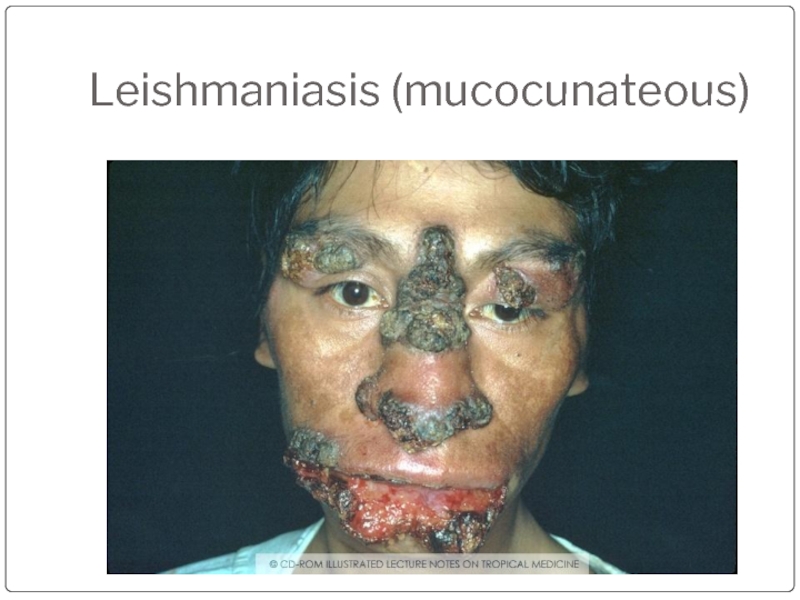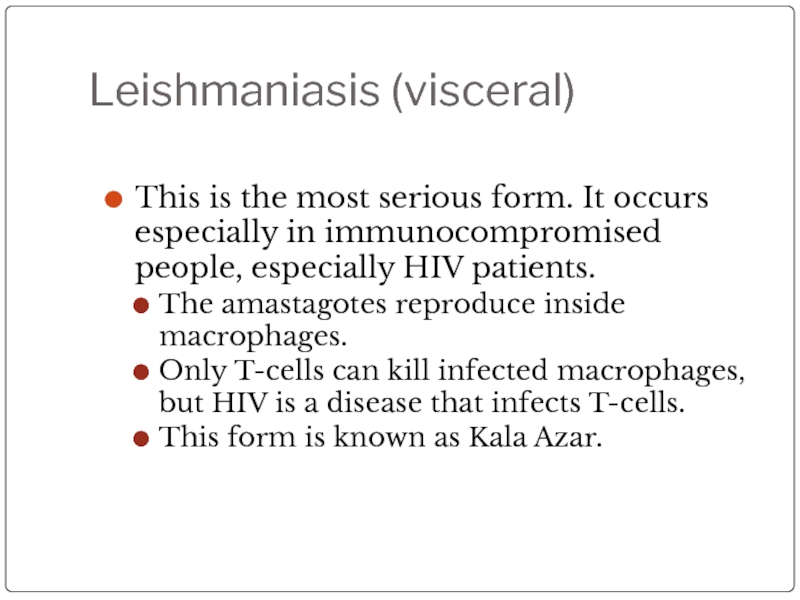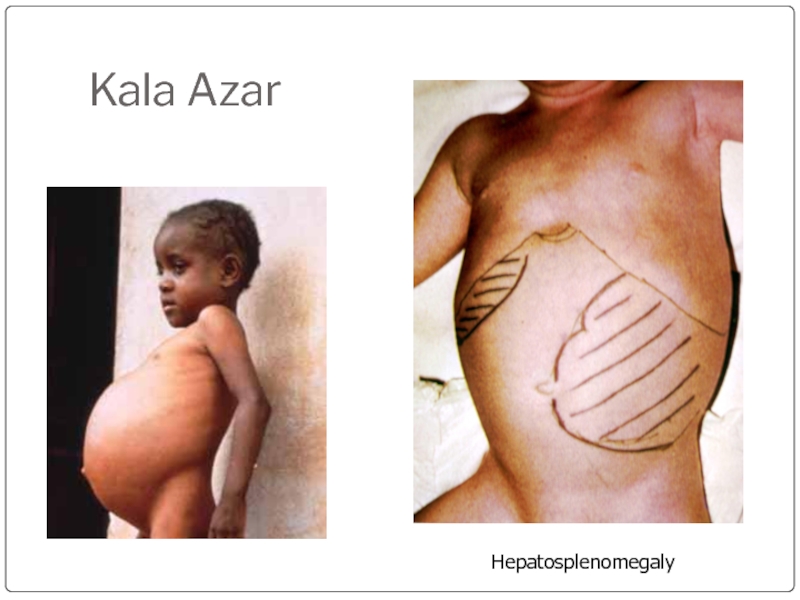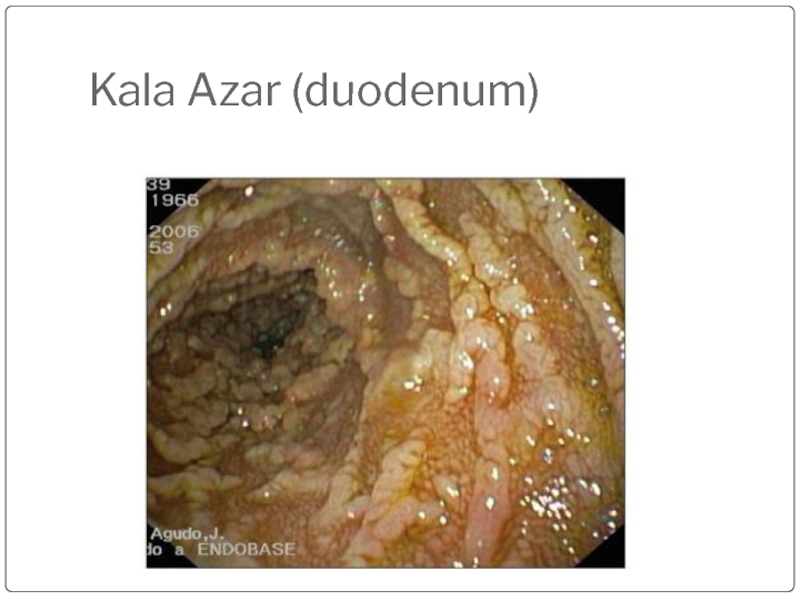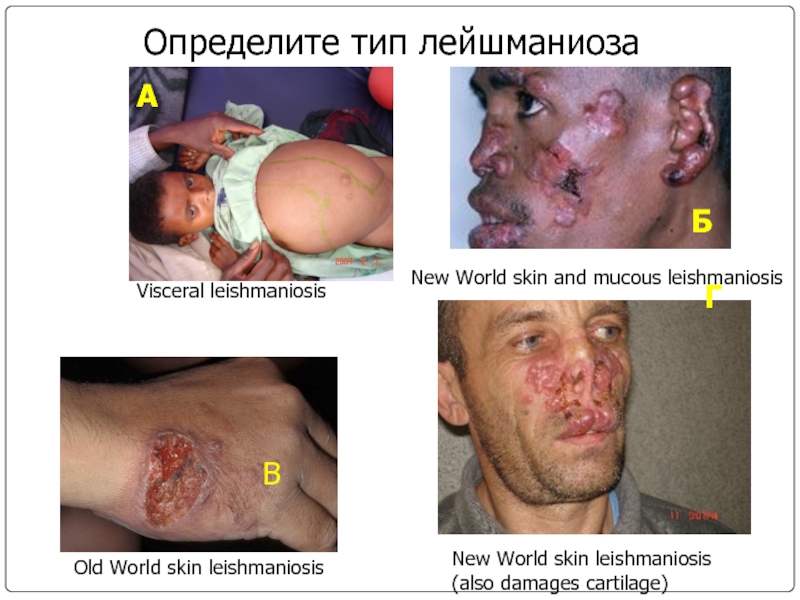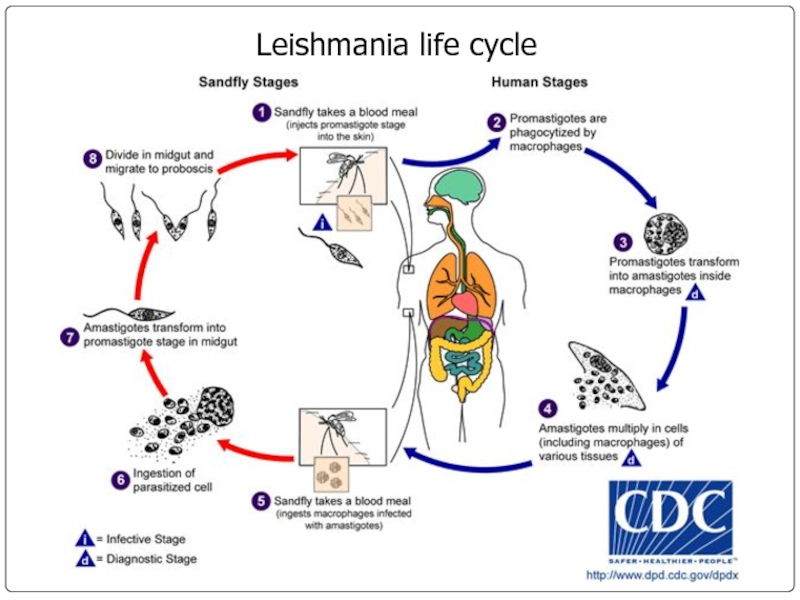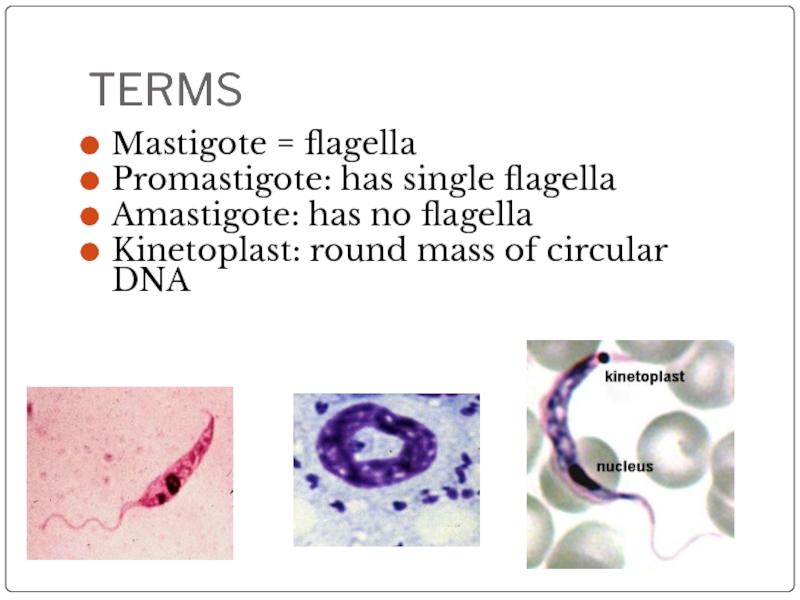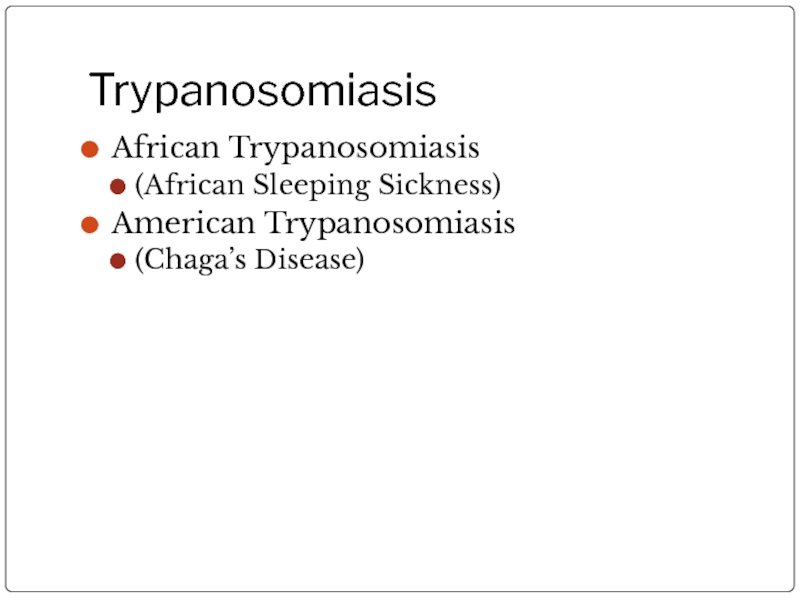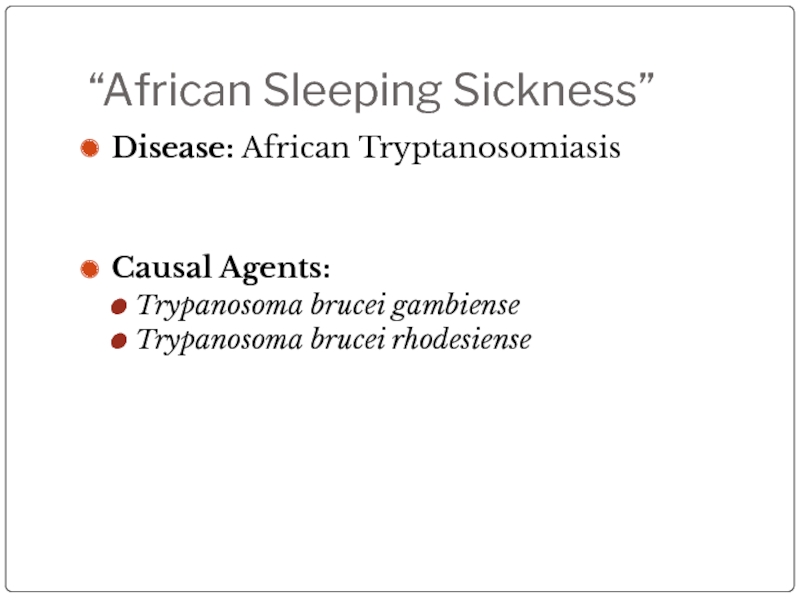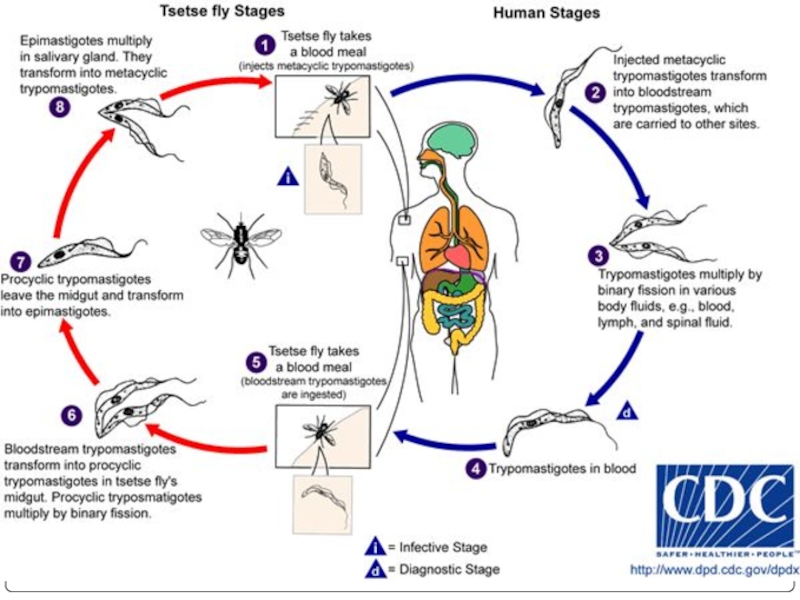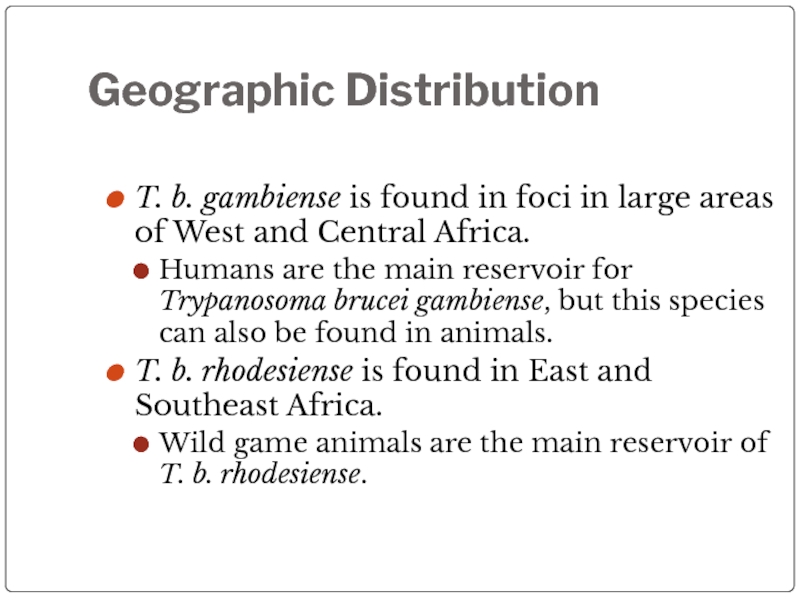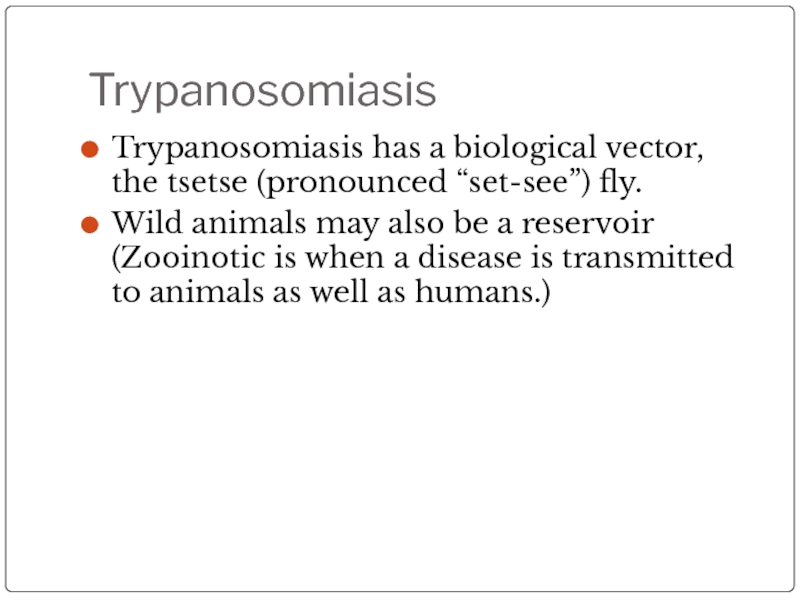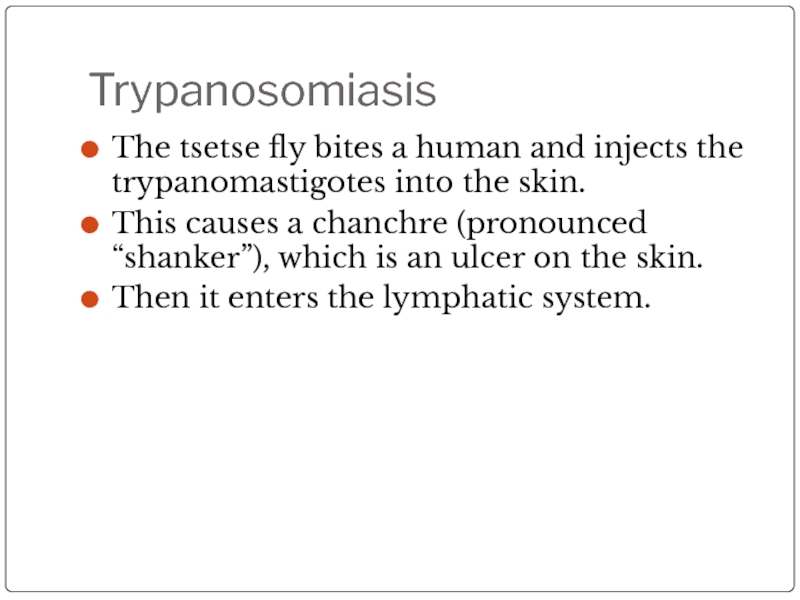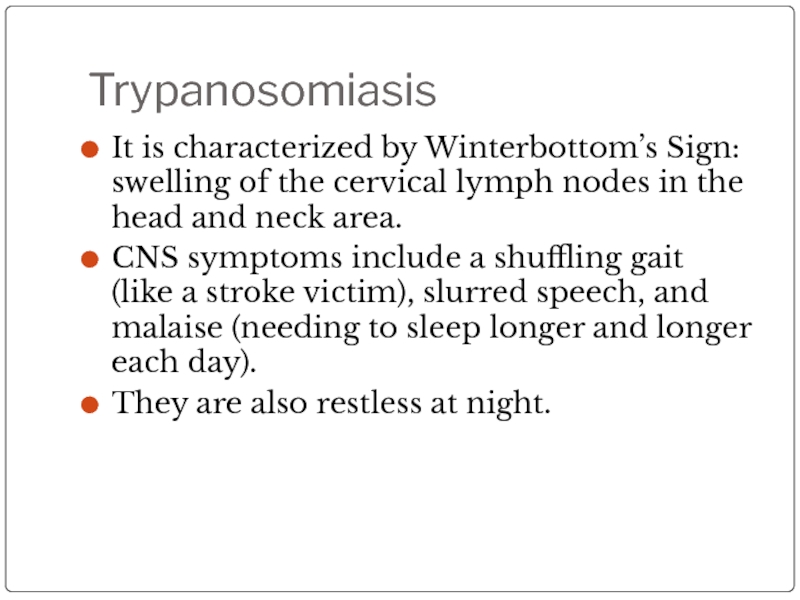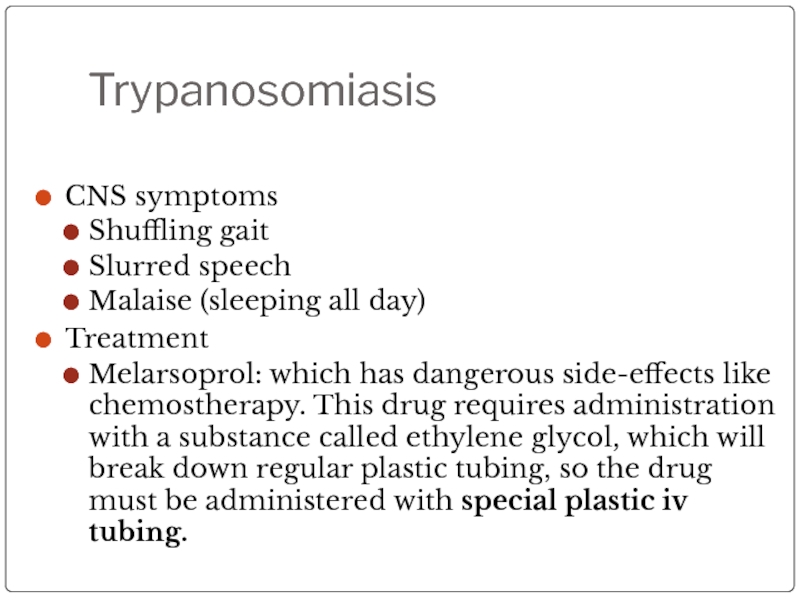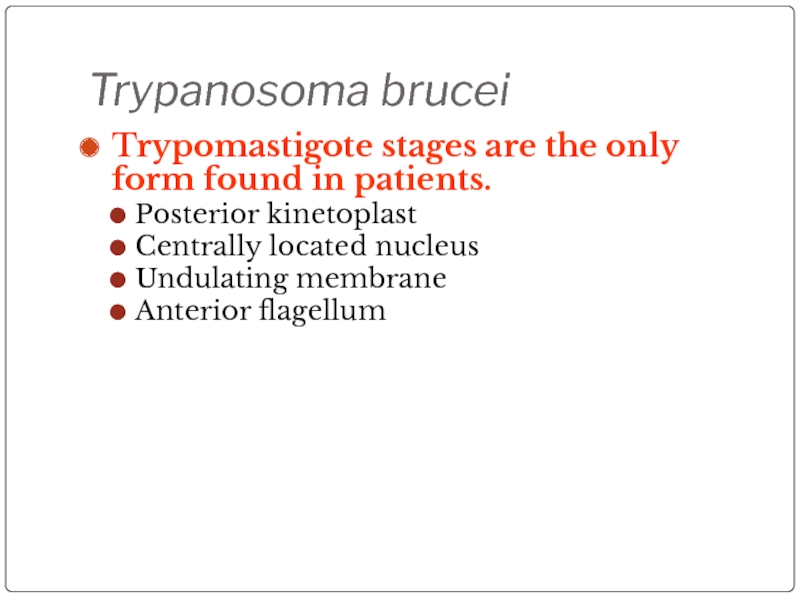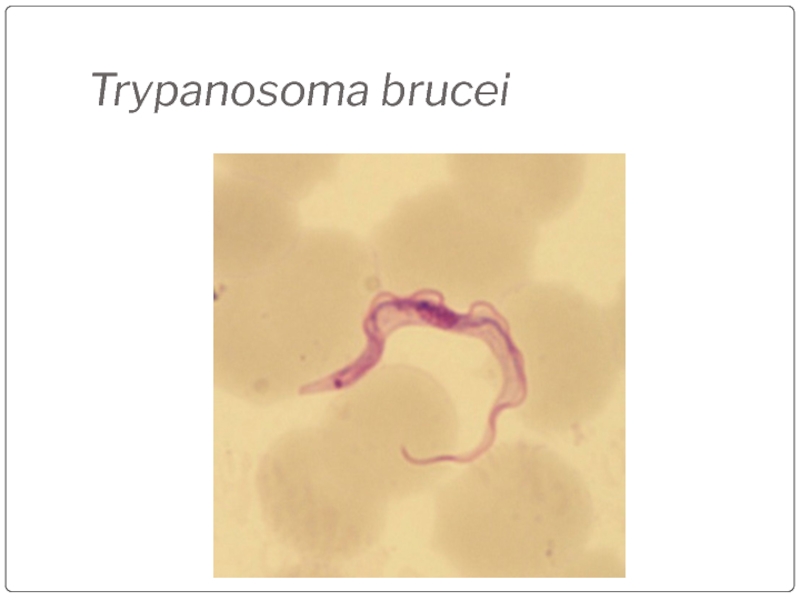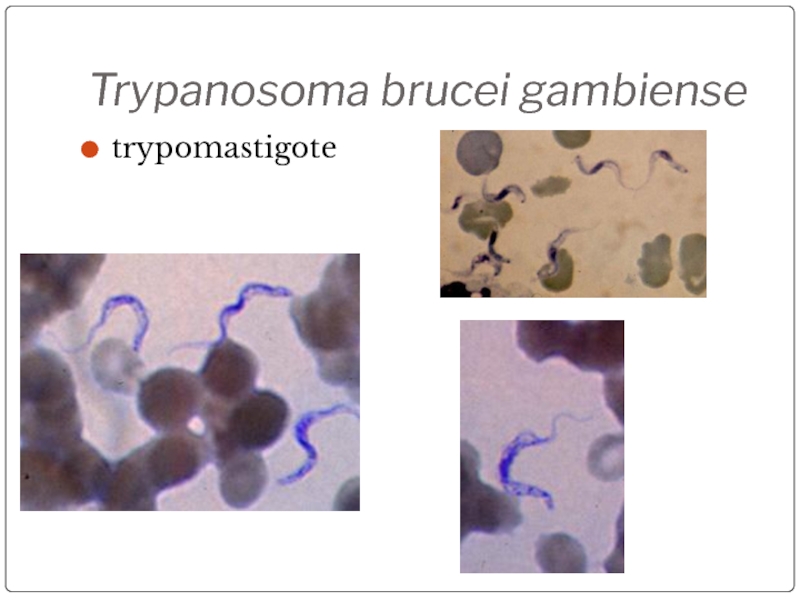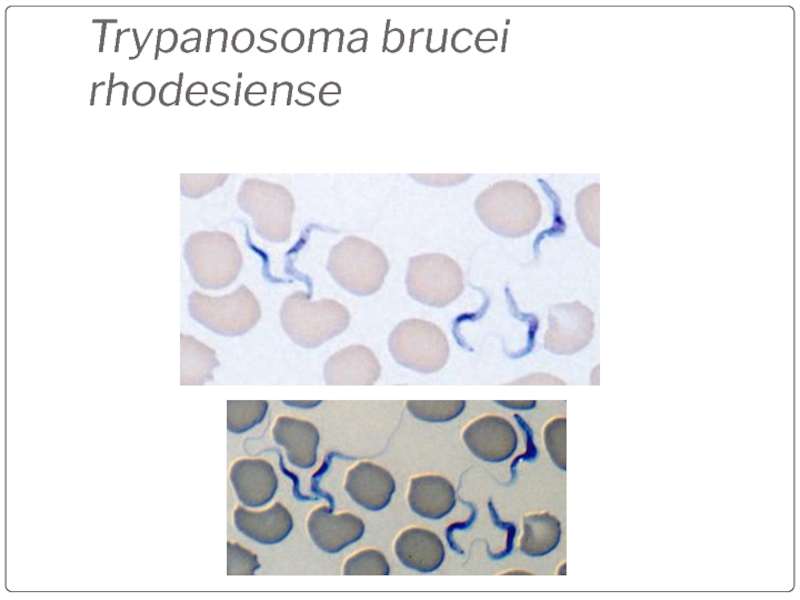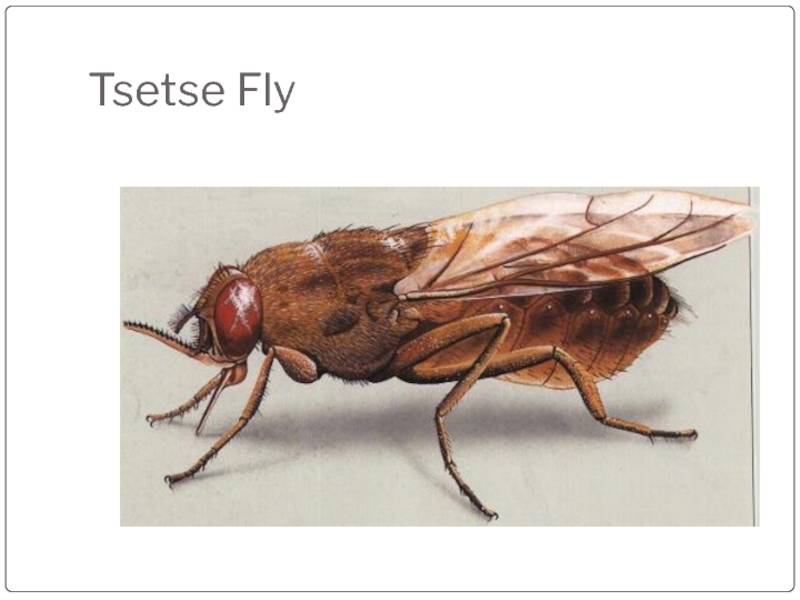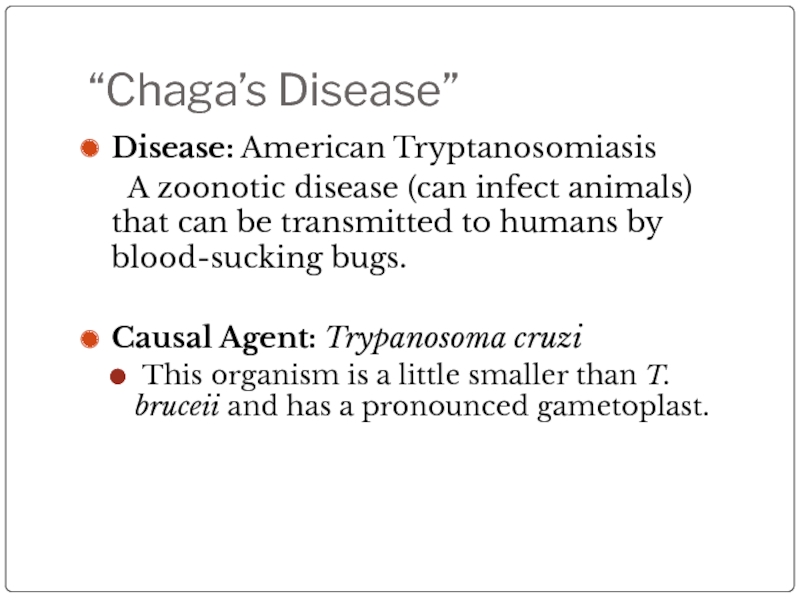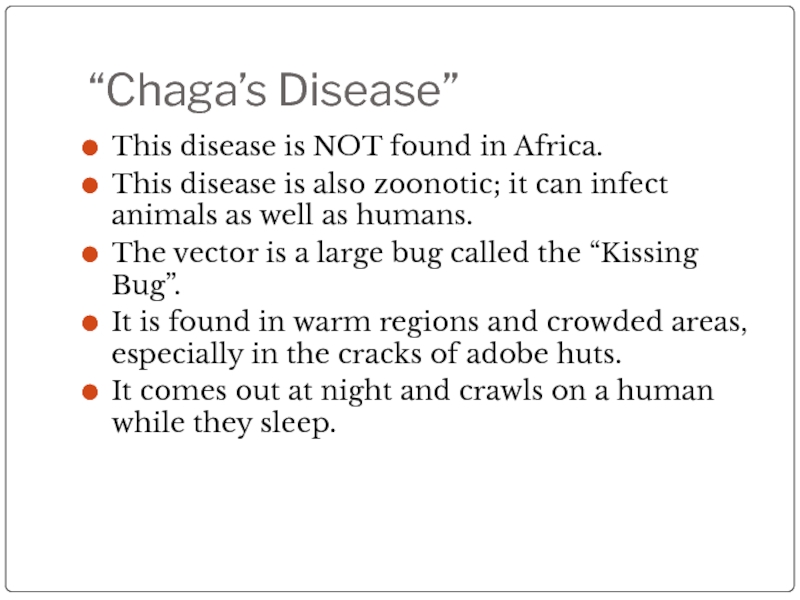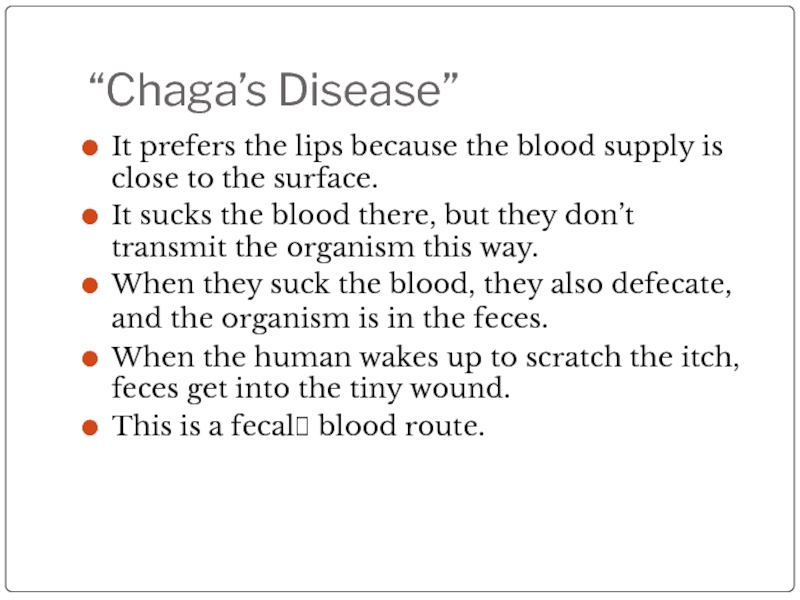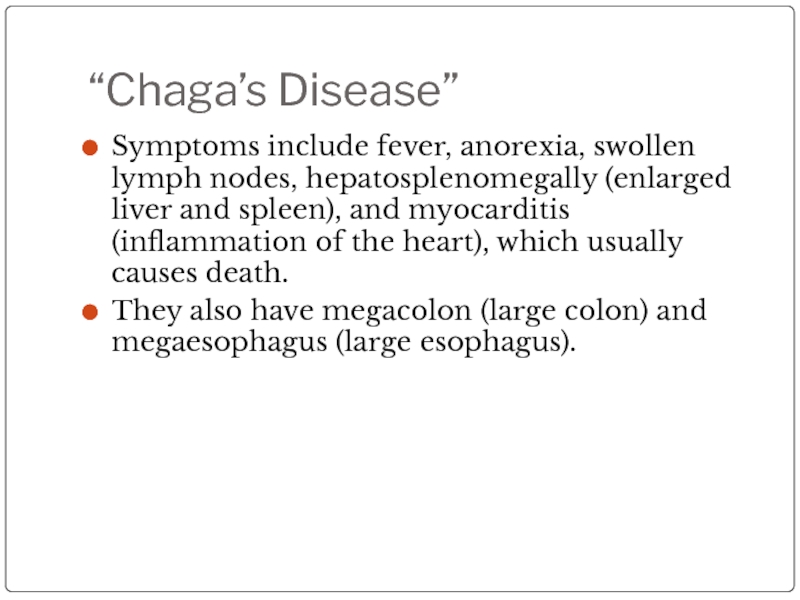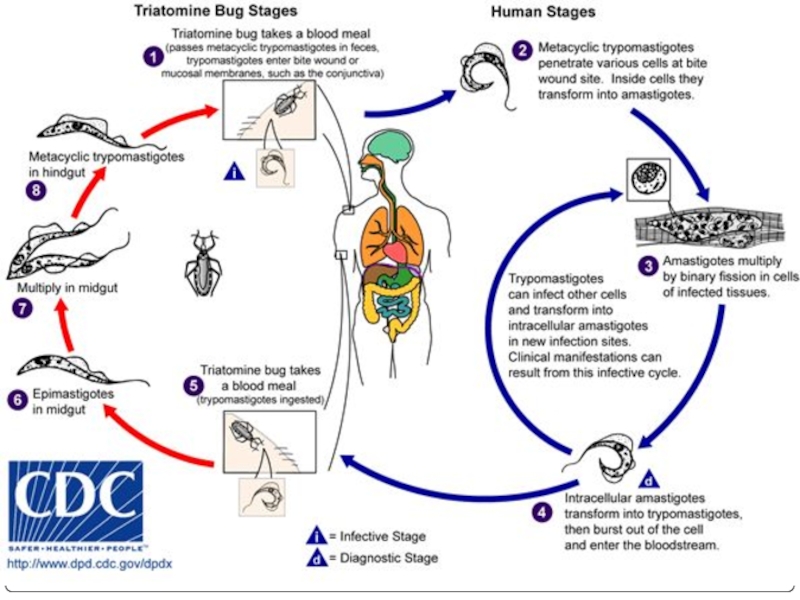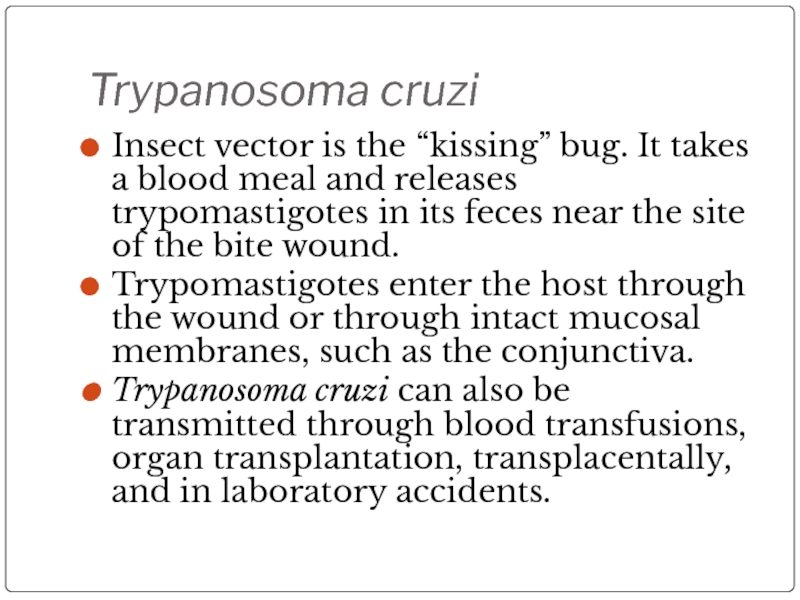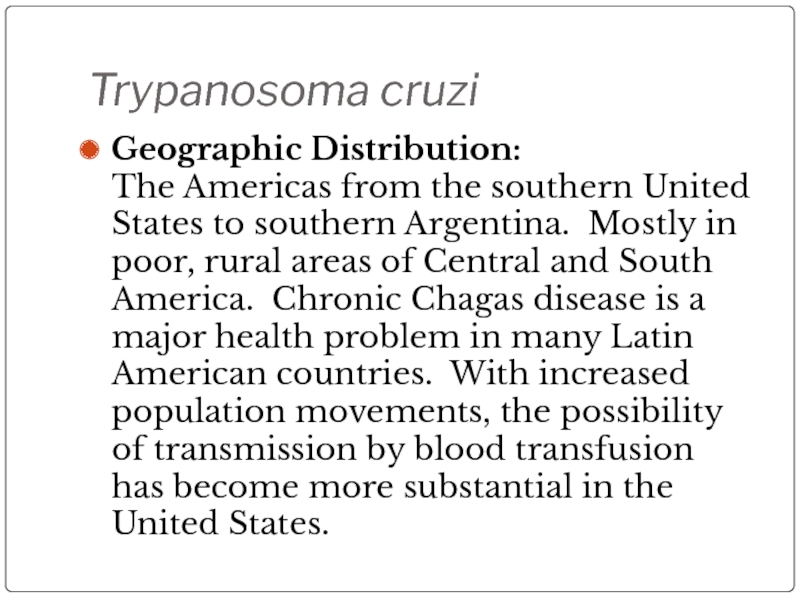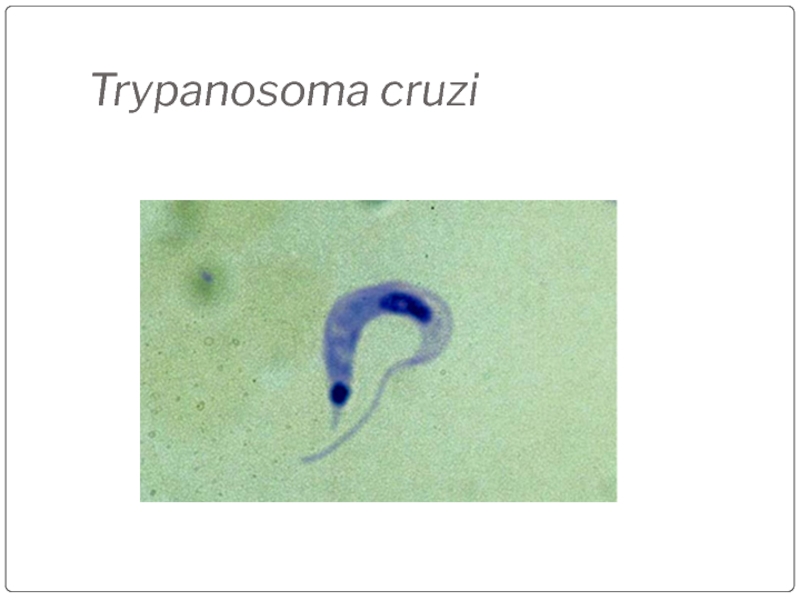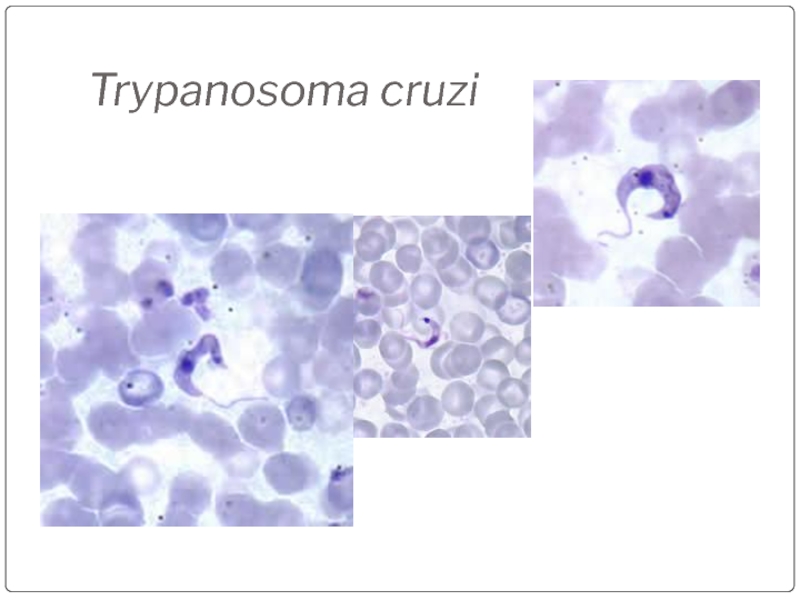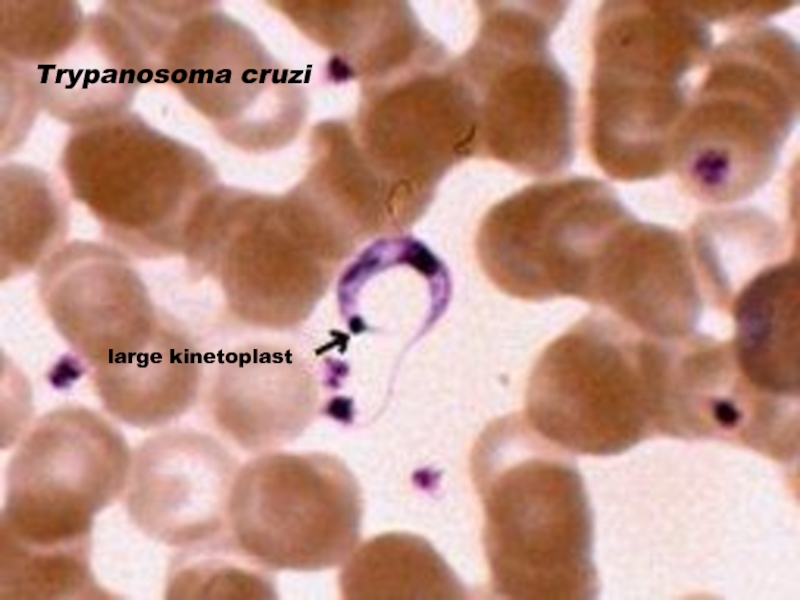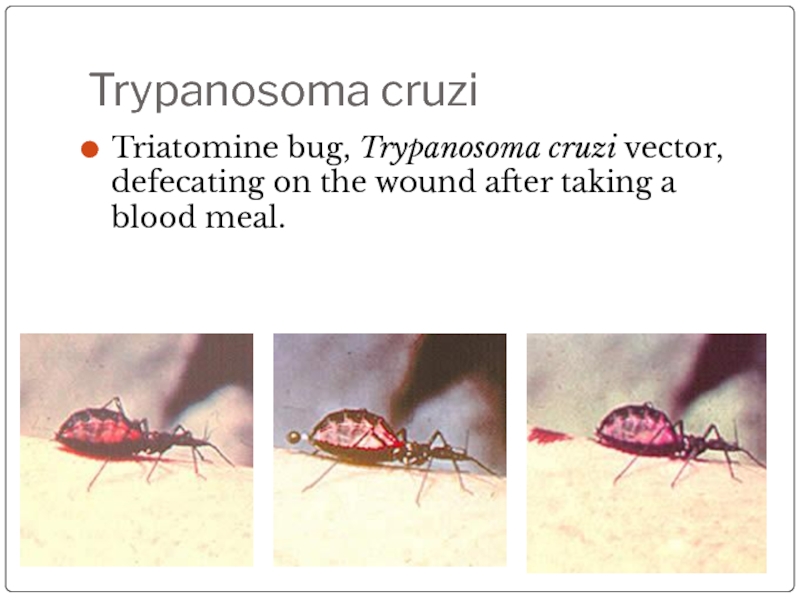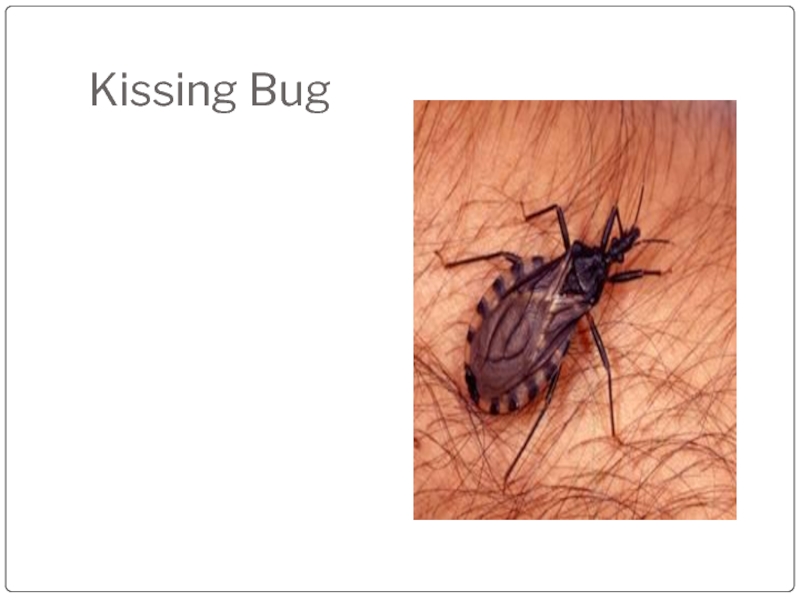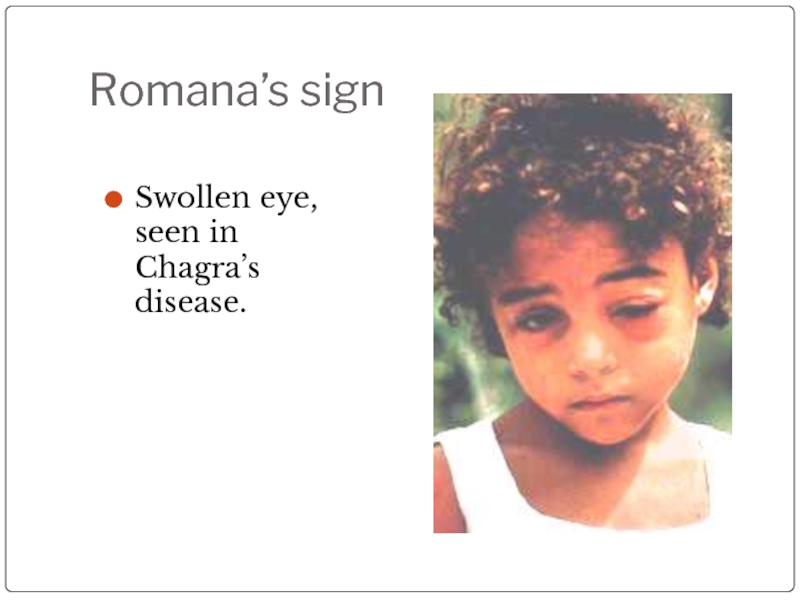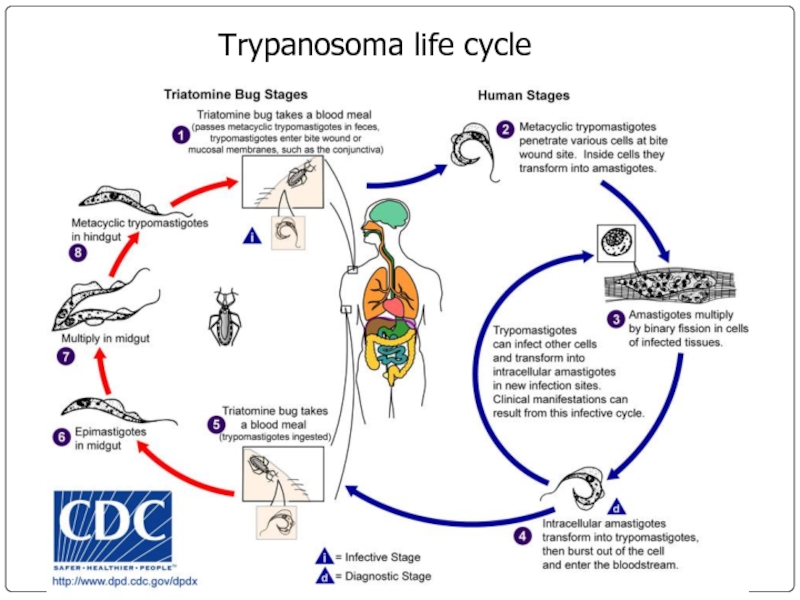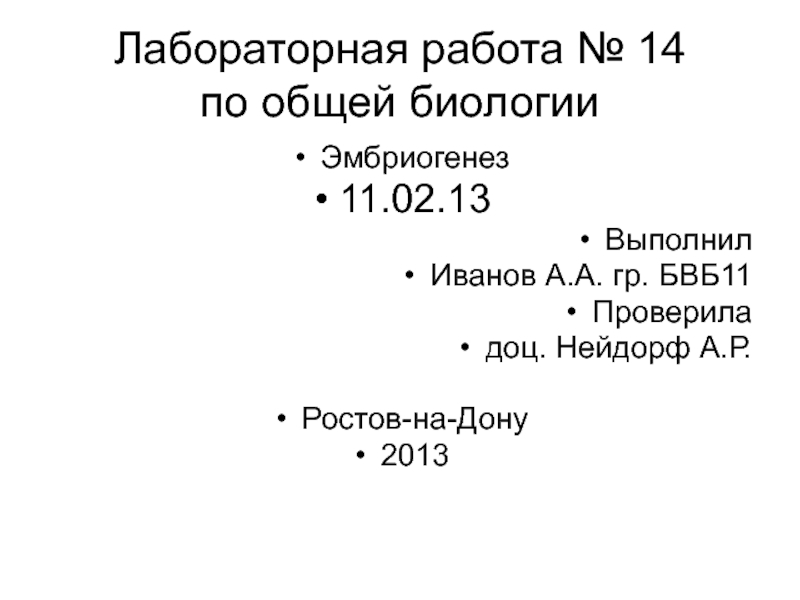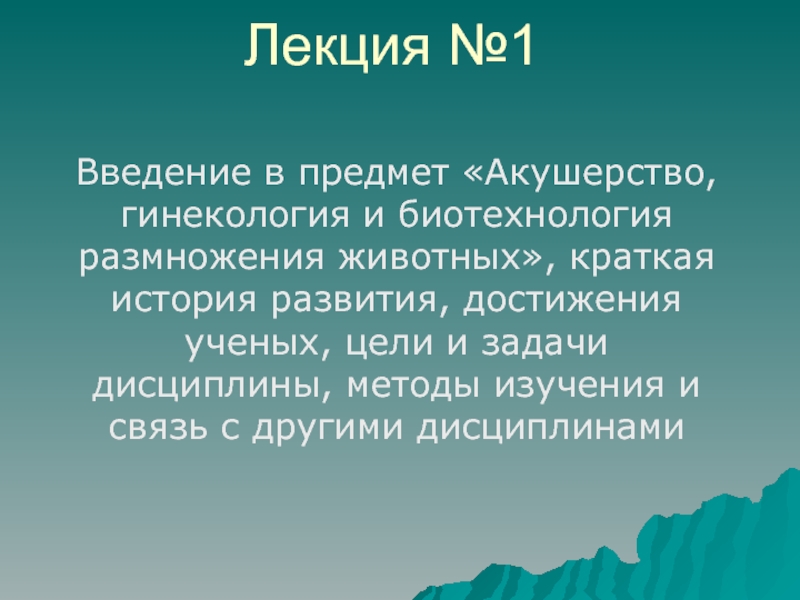- Главная
- Разное
- Дизайн
- Бизнес и предпринимательство
- Аналитика
- Образование
- Развлечения
- Красота и здоровье
- Финансы
- Государство
- Путешествия
- Спорт
- Недвижимость
- Армия
- Графика
- Культурология
- Еда и кулинария
- Лингвистика
- Английский язык
- Астрономия
- Алгебра
- Биология
- География
- Детские презентации
- Информатика
- История
- Литература
- Маркетинг
- Математика
- Медицина
- Менеджмент
- Музыка
- МХК
- Немецкий язык
- ОБЖ
- Обществознание
- Окружающий мир
- Педагогика
- Русский язык
- Технология
- Физика
- Философия
- Химия
- Шаблоны, картинки для презентаций
- Экология
- Экономика
- Юриспруденция
Pathologic Protozoa презентация
Содержание
- 1. Pathologic Protozoa
- 2. CHARACTERISTICS OF PROTOZOA 1. Unicellular 2. Chemoheterotrophs
- 3. CHARACTERISTICS OF PROTOZOA 4. The vegetative form
- 4. CHARACTERISTICS OF PROTOZOA 6. Some produce cysts.
- 5. PROTOZOA CYSTS Cysts are not as resistant
- 6. Classification Domain: Eukaryotes Kingdom: Protista
- 7. Classification Traditional classification of protozoa phylae was
- 8. Modern Classification Modern classification of protozoa is
- 9. EUGLENOZOA EUGLENOZOA (older classification = Mastigophora):
- 10. MASTIGOPHORA DISEASES Trypanosomiasis Leishmaniasis
- 11. TERMS Promastigote: has single flagella Amastigote: has no flagella Kinetoplast: round mass of circular DNA
- 12. Leishmania donovani Domain: Eukaryota Kingdom: Protista Phylum: Mastigophora Class: Kinetoplastida Order: Trypanosomatida Genus: Leishmania Species: donovani
- 13. Leishmania donovani Disease: Leishmaniasis Vector-borne disease transmitted by sandflies.
- 14. Leishmania Life Cycle Kinetoplast It starts out
- 15. Leishmania rosette In prepared slides you can
- 16. Leishmaniasis rosette
- 17. Leishmania Life Cycle It reproduces in the
- 18. Leishmaniasis These amastigotes multiply in various organs
- 19. Leishmania Life Cycle The female sandflies inject
- 20. Leishmaniasis Life Cycle
- 21. Leishmania donovani (Promastigote) Single flagellum found in sand flies
- 22. Leishmaniasis Amastogotes Amastogotes with nucleus and kinetoplast Macrophage rupturing
- 23. Leishmania Amastigotes
- 24. Sandfly This looks like a mosquito, except
- 25. Leishmaniasis Geographic Distribution: More than 90 percent
- 26. Leishmaniasis There are three forms of Leishmaniasis: Cutaneous Mucocutaneus Visceral
- 27. Cutaneous Leishmaniasis The disease is only at
- 28. Leishmaniasis (cutaneous)
- 29. Leishmaniasis (cutaneous)
- 30. Leishmaniasis (cutaneous)
- 31. Leishmaniasis (mucocunateous) This is when the disease
- 32. Leishmaniasis (mucocunateous)
- 33. Leishmaniasis (visceral) This is the most serious
- 34. Kala Azar Hepatosplenomegaly
- 35. Kala Azar (duodenum)
- 36. Определите тип лейшманиоза А Б В Г
- 37. Leishmania life cycle
- 38. TERMS Mastigote = flagella Promastigote: has single
- 39. Trypanosomiasis African Trypanosomiasis (African Sleeping Sickness) American Trypanosomiasis (Chaga’s Disease)
- 40. “African Sleeping Sickness” Disease: African Tryptanosomiasis
- 42. Geographic Distribution T. b. gambiense is found
- 43. Trypanosomiasis Trypanosomiasis has a biological vector, the
- 44. Trypanosomiasis The tsetse fly bites a human
- 45. Trypanosomiasis It is characterized by Winterbottom’s Sign:
- 46. Trypanosomiasis CNS symptoms Shuffling gait Slurred speech
- 47. Trypanosoma brucei Trypomastigote stages are the only
- 48. Trypanosoma brucei
- 49. Trypanosoma brucei gambiense trypomastigote
- 50. Trypanosoma brucei rhodesiense
- 51. Tsetse Fly
- 52. “Chaga’s Disease” Disease: American Tryptanosomiasis A zoonotic
- 53. “Chaga’s Disease” This disease is NOT found
- 54. “Chaga’s Disease” It prefers the lips because
- 55. “Chaga’s Disease” Symptoms include fever, anorexia, swollen
- 57. Trypanosoma cruzi Insect vector is the “kissing”
- 58. Trypanosoma cruzi Geographic Distribution: The Americas from
- 59. Trypanosoma cruzi
- 60. Trypanosoma cruzi
- 61. Trypanosoma cruzi large kinetoplast
- 62. Trypanosoma cruzi Triatomine bug, Trypanosoma cruzi vector,
- 63. Kissing Bug
- 64. Romana’s sign Swollen eye, seen in Chagra’s disease.
- 65. Trypanosoma life cycle
Слайд 2CHARACTERISTICS OF PROTOZOA
1. Unicellular
2. Chemoheterotrophs (get their energy by breaking down
organic matter).
3. Most ingest their food; thus, they have special structures for this.
3. Most ingest their food; thus, they have special structures for this.
Слайд 3CHARACTERISTICS OF PROTOZOA
4. The vegetative form is the TROPHOZOA (tropho =
movement; zoite = animal; they move like an animal). Trophozoa have special organelles for movement.
5. Capable of reproduction
A. Asexual: fission, budding, or schizogony
(produces a large number of trophozoites)
B. Sexual: conjugation
5. Capable of reproduction
A. Asexual: fission, budding, or schizogony
(produces a large number of trophozoites)
B. Sexual: conjugation
Слайд 4CHARACTERISTICS OF PROTOZOA
6. Some produce cysts.
These are not tissue cysts
like a human gets under their skin; protozoa cysts are cellular.
They have a thick cell wall that allows for survival in harsh environments better than the trophozoite form.
They have a thick cell wall that allows for survival in harsh environments better than the trophozoite form.
Слайд 5PROTOZOA CYSTS
Cysts are not as resistant as a bacterial endospore.
You
can kill cysts by boiling them.
They can live in the soil or water for months.
A cyst is no motile, so it is not trophozoic.
A cyst does not procure its nutrients or ingest food, but it can absorb nutrients.
It has no organelles to ingest food.
They can live in the soil or water for months.
A cyst is no motile, so it is not trophozoic.
A cyst does not procure its nutrients or ingest food, but it can absorb nutrients.
It has no organelles to ingest food.
Слайд 7Classification
Traditional classification of protozoa phylae was based on mode of locomotion.
MASTIGOPHORA
(flagella)
CILIOPHORA (cilia)
SARCODINA (amoebas)
SPOROZOA (spore-formers)
Apicomplexa (attachment organ)
CILIOPHORA (cilia)
SARCODINA (amoebas)
SPOROZOA (spore-formers)
Apicomplexa (attachment organ)
Слайд 8Modern Classification
Modern classification of protozoa is based on how they evolved
and how closely related they are (phylogenetic taxonomy), as determined by their ribosomal RNA. The human pathogenic protozoa may be classified as follows:
METAMONADA (multiple flagella with feeding grooves)
AMOEBOZOA (amoebas)
APICOMPLEXA (attachment organ)
CILIOPHORA (cilia)
EUGLENOZOA (flagella and disc-shaped cristae in mitochondria)
METAMONADA (multiple flagella with feeding grooves)
AMOEBOZOA (amoebas)
APICOMPLEXA (attachment organ)
CILIOPHORA (cilia)
EUGLENOZOA (flagella and disc-shaped cristae in mitochondria)
Слайд 9EUGLENOZOA
EUGLENOZOA (older classification = Mastigophora): has flagella and its mitochondria have
disc-shaped cristae
Organisms
Trypanosoma
Disease: Trypanosomiasis
Leishmania donovani
Disease: Leishmaniasis
Organisms
Trypanosoma
Disease: Trypanosomiasis
Leishmania donovani
Disease: Leishmaniasis
Слайд 11TERMS
Promastigote: has single flagella
Amastigote: has no flagella
Kinetoplast: round mass of circular
DNA
Слайд 12Leishmania donovani
Domain: Eukaryota
Kingdom: Protista
Phylum: Mastigophora
Class: Kinetoplastida
Order: Trypanosomatida
Genus: Leishmania
Species: donovani
Слайд 14Leishmania Life Cycle
Kinetoplast
It starts out as a spindle-shaped, single flagellated cell
called a promastigote (mastigote means flagella).
You can also see the nucleus and a kinetoplast (mass of circular DNA).
You can also see the nucleus and a kinetoplast (mass of circular DNA).
Слайд 15Leishmania rosette
In prepared slides you can see promastigotes align their nose
in a circle, called a rosette.
Слайд 17Leishmania Life Cycle
It reproduces in the gut of a female sandfly,
and migrates to her proboscis (mouth part).
It is introduced into the human by her bite.
It then enters a macrophage and becomes intracellular.
Here, it loses its flagella and is now known as an amastigote.
It is introduced into the human by her bite.
It then enters a macrophage and becomes intracellular.
Here, it loses its flagella and is now known as an amastigote.
Слайд 18Leishmaniasis
These amastigotes multiply in various organs including the spleen, liver, and
lymph nodes.
Symptoms include lymph adenopathy, fever, weight loss, and a decrease in all blood cells.
The treatment is almost as bad as the disease because of the side effects. It is best to catch it early.
Symptoms include lymph adenopathy, fever, weight loss, and a decrease in all blood cells.
The treatment is almost as bad as the disease because of the side effects. It is best to catch it early.
Слайд 19Leishmania Life Cycle
The female sandflies inject the infective stage, promastigotes, during
blood meals.
Macrophages phagocytize them and they transform into amastigotes.
Other sandflies become infected during blood meals when they ingest infected macrophages.
In the sandfly's midgut, the parasites differentiate into promastigotes, which multiply and migrate to the proboscis.
Macrophages phagocytize them and they transform into amastigotes.
Other sandflies become infected during blood meals when they ingest infected macrophages.
In the sandfly's midgut, the parasites differentiate into promastigotes, which multiply and migrate to the proboscis.
Слайд 25Leishmaniasis
Geographic Distribution:
More than 90 percent of the world's cases of visceral
leishmaniasis are in India, Bangladesh, Nepal, Sudan, and Brazil.
Leishmaniasis is also found in Mexico, Central America, and South America, southern Europe, Asia, the Middle East, and Africa.
Leishmaniasis is also found in Mexico, Central America, and South America, southern Europe, Asia, the Middle East, and Africa.
Слайд 27Cutaneous Leishmaniasis
The disease is only at the site of the bite.
This form is seen in Texas, Mexico, Asia, and the Middle East (our Iraq troops are coming down with this form).
It manifests as a large, wet sore with raised edges. It looks like a volcano with weepy serum coming out of the center.
The wound is not contagious, just the sandfly bite.
Dogs can get this disease, too.
Слайд 31Leishmaniasis (mucocunateous)
This is when the disease located in the mucous membranes
of the nose and mouth.
The most gruesome photos are of this form.
The most gruesome photos are of this form.
Слайд 33Leishmaniasis (visceral)
This is the most serious form. It occurs especially in
immunocompromised people, especially HIV patients.
The amastagotes reproduce inside macrophages.
Only T-cells can kill infected macrophages, but HIV is a disease that infects T-cells.
This form is known as Kala Azar.
The amastagotes reproduce inside macrophages.
Only T-cells can kill infected macrophages, but HIV is a disease that infects T-cells.
This form is known as Kala Azar.
Слайд 36Определите тип лейшманиоза
А
Б
В
Г
Visceral leishmaniosis
Old World skin leishmaniosis
New World skin and mucous
leishmaniosis
New World skin leishmaniosis (also damages cartilage)
Слайд 38TERMS
Mastigote = flagella
Promastigote: has single flagella
Amastigote: has no flagella
Kinetoplast: round mass
of circular DNA
Слайд 39Trypanosomiasis
African Trypanosomiasis
(African Sleeping Sickness)
American Trypanosomiasis
(Chaga’s Disease)
Слайд 40“African Sleeping Sickness”
Disease: African Tryptanosomiasis
Causal Agents:
Trypanosoma brucei gambiense
Trypanosoma brucei rhodesiense
Слайд 42Geographic Distribution
T. b. gambiense is found in foci in large areas
of West and Central Africa.
Humans are the main reservoir for Trypanosoma brucei gambiense, but this species can also be found in animals.
T. b. rhodesiense is found in East and Southeast Africa.
Wild game animals are the main reservoir of T. b. rhodesiense.
Humans are the main reservoir for Trypanosoma brucei gambiense, but this species can also be found in animals.
T. b. rhodesiense is found in East and Southeast Africa.
Wild game animals are the main reservoir of T. b. rhodesiense.
Слайд 43Trypanosomiasis
Trypanosomiasis has a biological vector, the tsetse (pronounced “set-see”) fly.
Wild animals
may also be a reservoir (Zooinotic is when a disease is transmitted to animals as well as humans.)
Слайд 44Trypanosomiasis
The tsetse fly bites a human and injects the trypanomastigotes into
the skin.
This causes a chanchre (pronounced “shanker”), which is an ulcer on the skin.
Then it enters the lymphatic system.
This causes a chanchre (pronounced “shanker”), which is an ulcer on the skin.
Then it enters the lymphatic system.
Слайд 45Trypanosomiasis
It is characterized by Winterbottom’s Sign: swelling of the cervical lymph
nodes in the head and neck area.
CNS symptoms include a shuffling gait (like a stroke victim), slurred speech, and malaise (needing to sleep longer and longer each day).
They are also restless at night.
CNS symptoms include a shuffling gait (like a stroke victim), slurred speech, and malaise (needing to sleep longer and longer each day).
They are also restless at night.
Слайд 46Trypanosomiasis
CNS symptoms
Shuffling gait
Slurred speech
Malaise (sleeping all day)
Treatment
Melarsoprol: which has dangerous side-effects
like chemostherapy. This drug requires administration with a substance called ethylene glycol, which will break down regular plastic tubing, so the drug must be administered with special plastic iv tubing.
Слайд 47Trypanosoma brucei
Trypomastigote stages are the only form found in patients.
Posterior kinetoplast
Centrally
located nucleus
Undulating membrane
Anterior flagellum
Undulating membrane
Anterior flagellum
Слайд 52“Chaga’s Disease”
Disease: American Tryptanosomiasis
A zoonotic disease (can infect animals) that can
be transmitted to humans by blood-sucking bugs.
Causal Agent: Trypanosoma cruzi
This organism is a little smaller than T. bruceii and has a pronounced gametoplast.
Causal Agent: Trypanosoma cruzi
This organism is a little smaller than T. bruceii and has a pronounced gametoplast.
Слайд 53“Chaga’s Disease”
This disease is NOT found in Africa.
This disease is
also zoonotic; it can infect animals as well as humans.
The vector is a large bug called the “Kissing Bug”.
It is found in warm regions and crowded areas, especially in the cracks of adobe huts.
It comes out at night and crawls on a human while they sleep.
The vector is a large bug called the “Kissing Bug”.
It is found in warm regions and crowded areas, especially in the cracks of adobe huts.
It comes out at night and crawls on a human while they sleep.
Слайд 54“Chaga’s Disease”
It prefers the lips because the blood supply is close
to the surface.
It sucks the blood there, but they don’t transmit the organism this way.
When they suck the blood, they also defecate, and the organism is in the feces.
When the human wakes up to scratch the itch, feces get into the tiny wound.
This is a fecal? blood route.
It sucks the blood there, but they don’t transmit the organism this way.
When they suck the blood, they also defecate, and the organism is in the feces.
When the human wakes up to scratch the itch, feces get into the tiny wound.
This is a fecal? blood route.
Слайд 55“Chaga’s Disease”
Symptoms include fever, anorexia, swollen lymph nodes, hepatosplenomegally (enlarged liver
and spleen), and myocarditis (inflammation of the heart), which usually causes death.
They also have megacolon (large colon) and megaesophagus (large esophagus).
They also have megacolon (large colon) and megaesophagus (large esophagus).
Слайд 57Trypanosoma cruzi
Insect vector is the “kissing” bug. It takes a blood
meal and releases trypomastigotes in its feces near the site of the bite wound.
Trypomastigotes enter the host through the wound or through intact mucosal membranes, such as the conjunctiva.
Trypanosoma cruzi can also be transmitted through blood transfusions, organ transplantation, transplacentally, and in laboratory accidents.
Trypomastigotes enter the host through the wound or through intact mucosal membranes, such as the conjunctiva.
Trypanosoma cruzi can also be transmitted through blood transfusions, organ transplantation, transplacentally, and in laboratory accidents.
Слайд 58Trypanosoma cruzi
Geographic Distribution:
The Americas from the southern United States to southern
Argentina. Mostly in poor, rural areas of Central and South America. Chronic Chagas disease is a major health problem in many Latin American countries. With increased population movements, the possibility of transmission by blood transfusion has become more substantial in the United States.
Слайд 62Trypanosoma cruzi
Triatomine bug, Trypanosoma cruzi vector, defecating on the wound after
taking a blood meal.
